Made using AI but still very cool, makes me wish we had AI back when I was working in advertising. Link
![]()
Made using AI but still very cool, makes me wish we had AI back when I was working in advertising. Link
![]()

This batch of photos caught my attention mostly because of the shots of Fahaheel. I’ve come across old photos of Fahaheel before but they never get old, especially seeing how barren it used to be with just a dirt road running through it. Since it was close to Ahmadi, it was visited frequently by the KOC residents there.
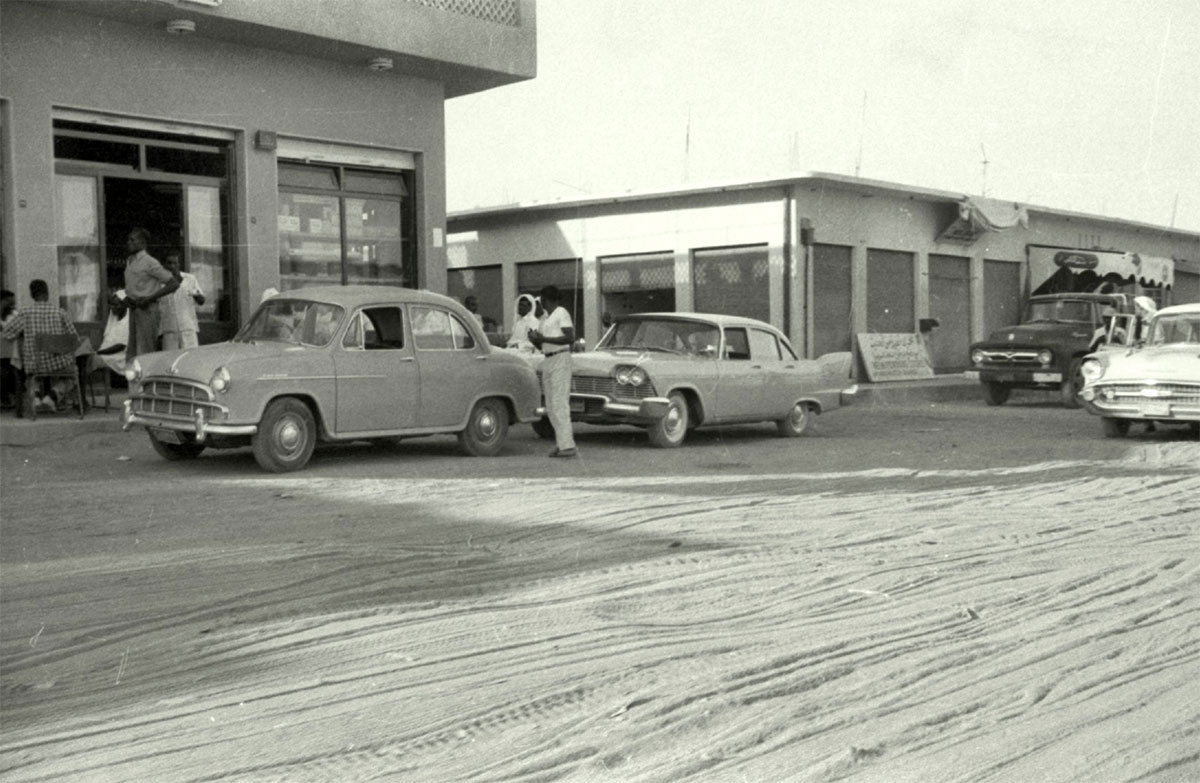
The photos here were scanned by Mark Anderson, the son of Suzanne and Malcolm Anderson. His dad worked at KOC in Marine in the late 50s before moving into production and various areas within the refinery. The family eventually left Kuwait in 1972.
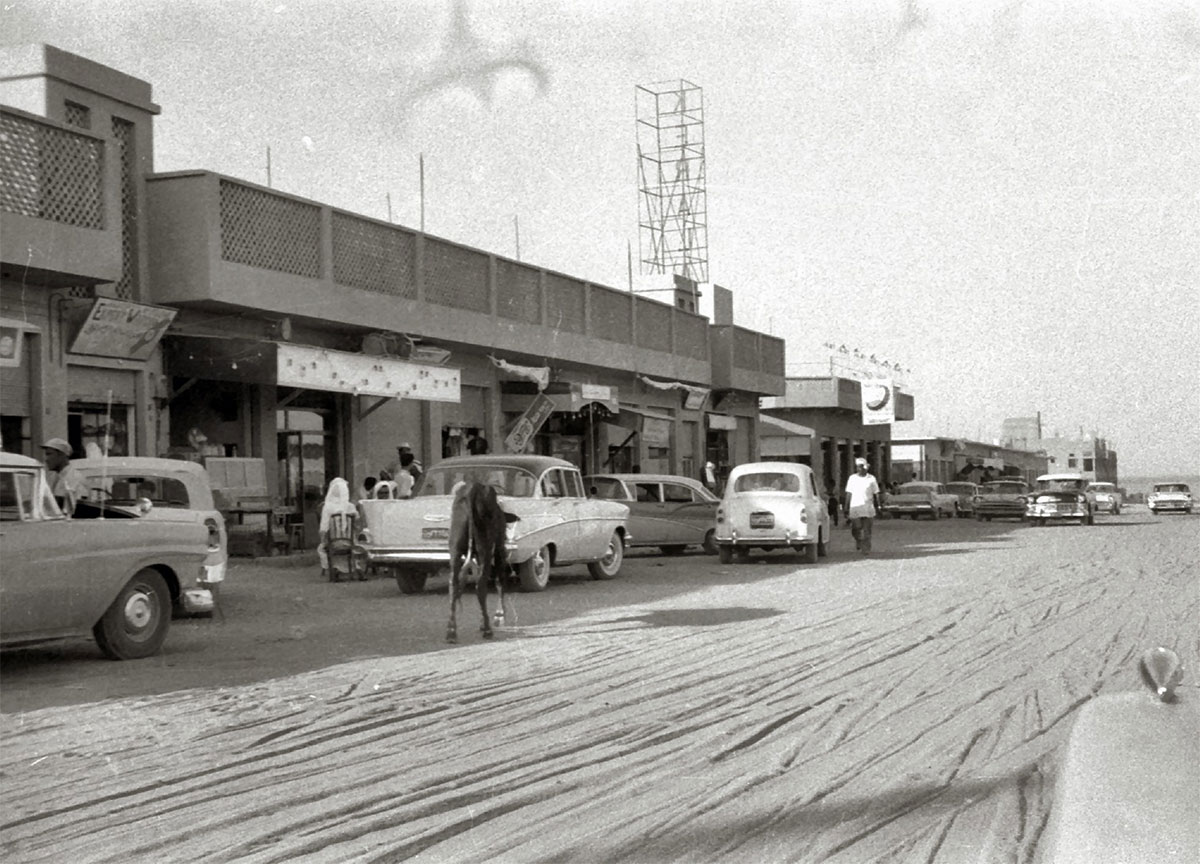
The photos in this post were taken in the late 50s and early 60s. Other than the shots of Fahaheel, there are also photos of his parents and their friends socializing at someone’s home. I love these kinds of photos since they give a glimpse into life back then, from the clothes people wore to the way their homes looked and how they socialized.
Sadly, both of Mark’s parents passed away a couple of months apart at the end of 2022. There are around 15 photos, if you want to check them out all click here.
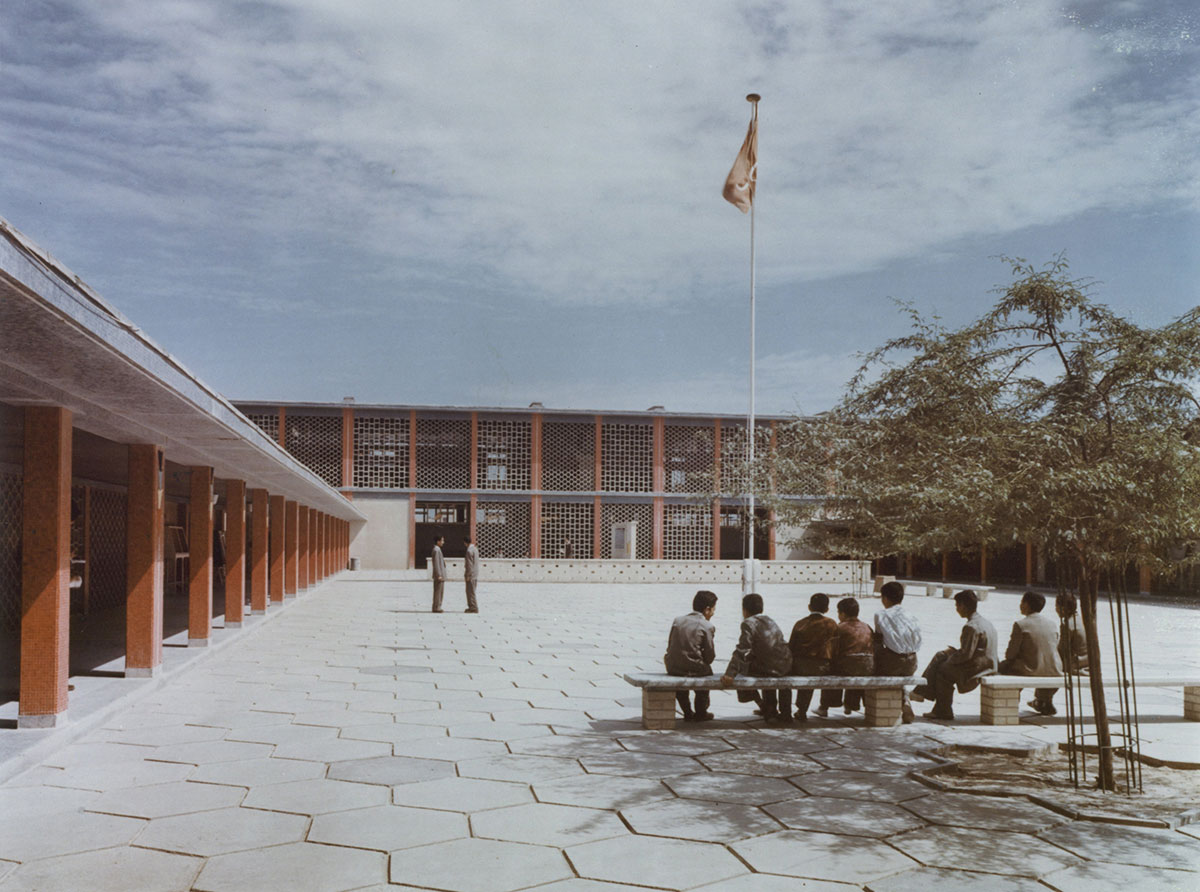
I was working on another post when I came across these photos I had gotten from my visit to the KOC Archives years ago. They were interesting pictures of a school, and a quick image reverse search took me to an old Tumblr post that had a similar photo and mentioned the school was Al Shamiya School for Boys. I kept digging to find out who designed it and when it was built, and I ended up finding some information in an essay by Roberto Fabbri titled “Prototyping Spaces for Education”. The essay is in the book Essays, Arguments and Interviews on Modern Architecture of Kuwait, a book that is available to purchase from the bookshop at Amricani or the Yarmouk Culture Center or their online shop.
The Al-Shamiya School for Boys, along with two other elementary schools, a technical college and five nurseries were designed by the British architectural firm Tripe & Wakeham in the 1950s. T&W were appointed by the Emir to design and build a series of ‘western standard’ educational facilities based on the requirements drafted by the Council of Education.
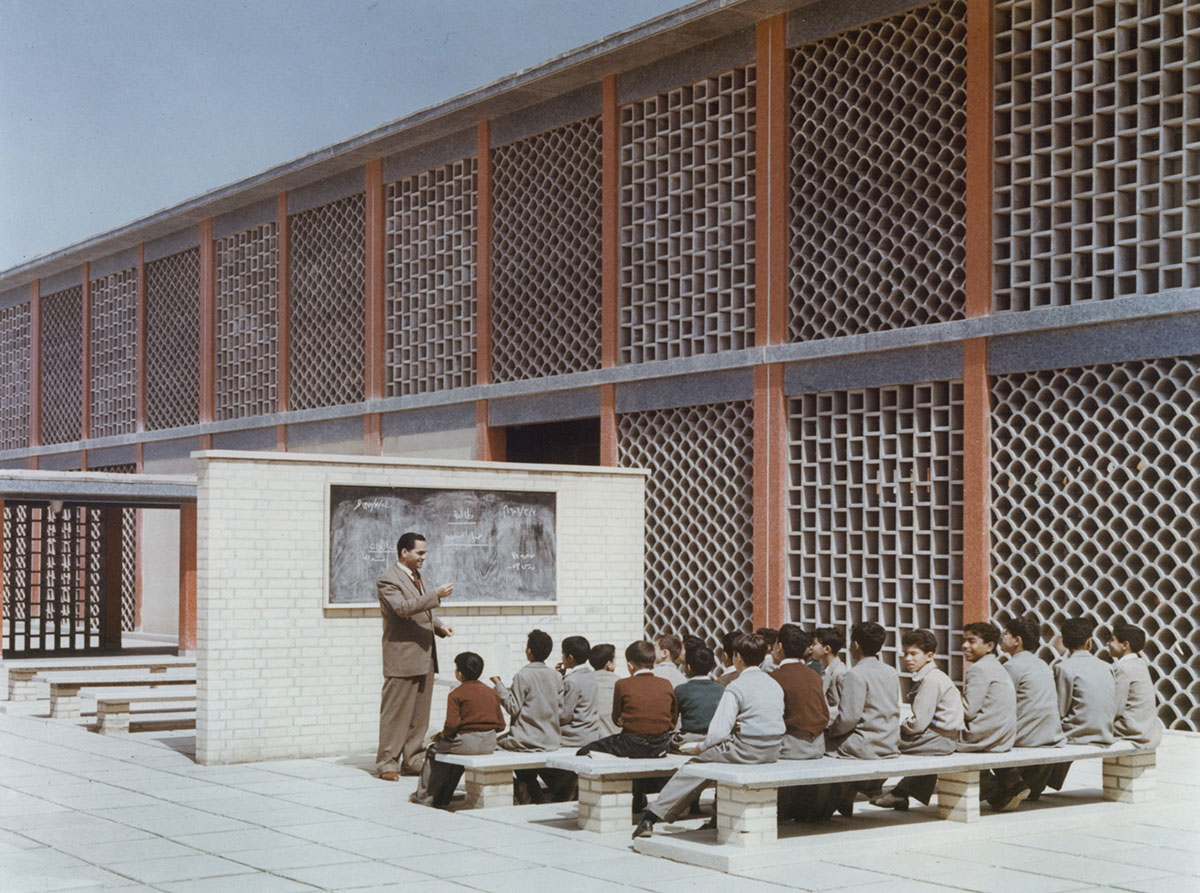
Tripe & Wakeham’s approach on design focused on balancing the sun and keeping the buildings naturally cool. Even though their plans differed from one project to another, everything followed the same idea: one-room-thick layouts to improve cross ventilation. The main spaces were oriented northeast, while balconies and overhangs faced southeast and were usually shaded with shutters or screens.
If you feel like reading some more, the Arabian Gulf Digital Archives have scans of the original notes by the architect Aitken of Tripe & Wakeham on the schools they designed. The scans expand on the above in a lot more detail and it really interesting to read the thinking process behind the designs and you can check those out here.
So if you ever wondered why old schools looked the way they do, now you know.
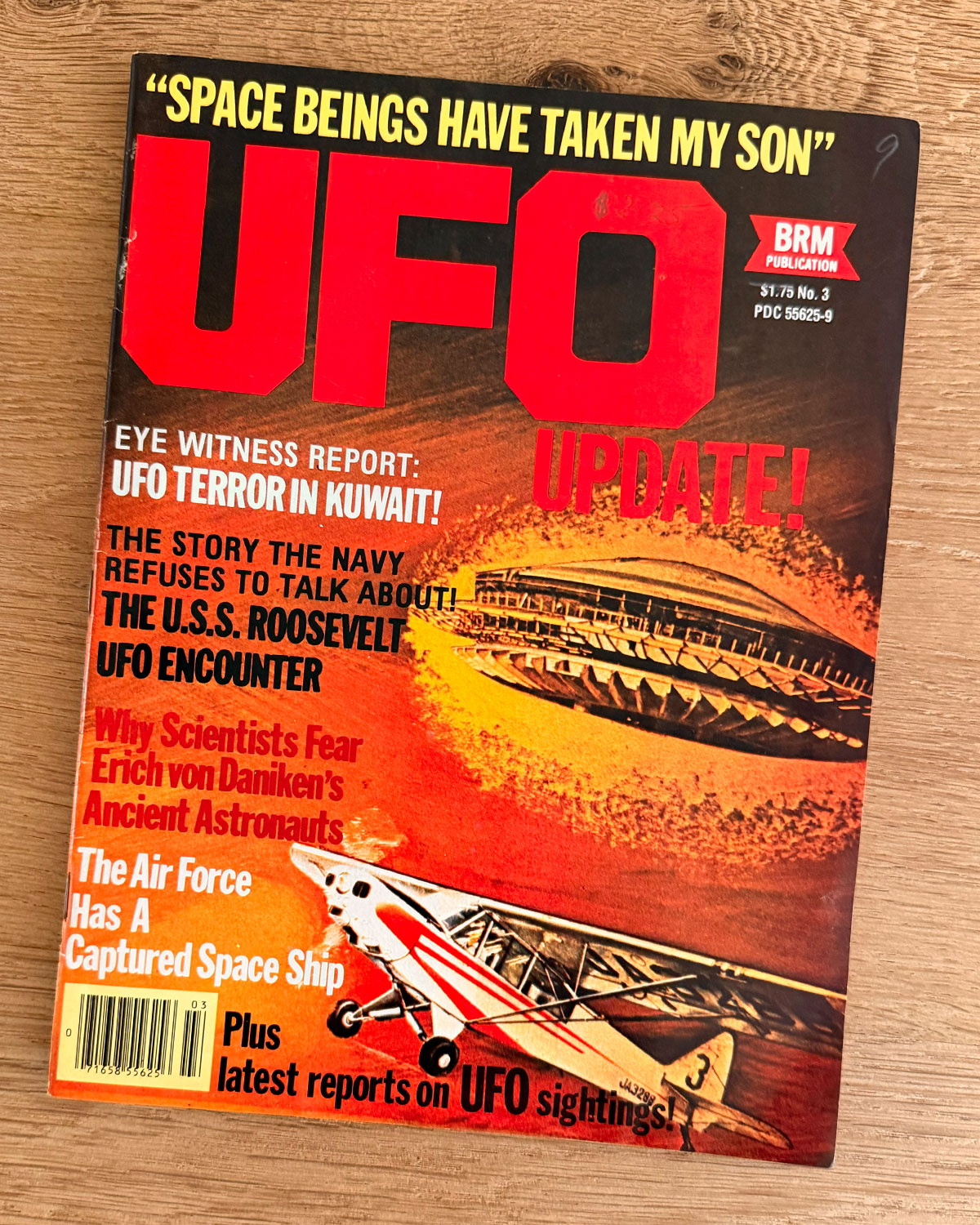
I’ve posted about UFO sightings in Kuwait in the late 70s twice on the blog, first time back in 2013 and then again in 2021. Recently, I found out (via @thevenerablebetty) that Kuwait was also featured in the 1979 summer edition of UFO Update! magazine, and I managed to get a copy of it.
The article was written by an executive from an American oil company who was in Kuwait on business. While driving out to one of the oil fields, he spotted a strange aircraft, and the piece details what he experienced and saw. He wasn’t the only eyewitness that night.
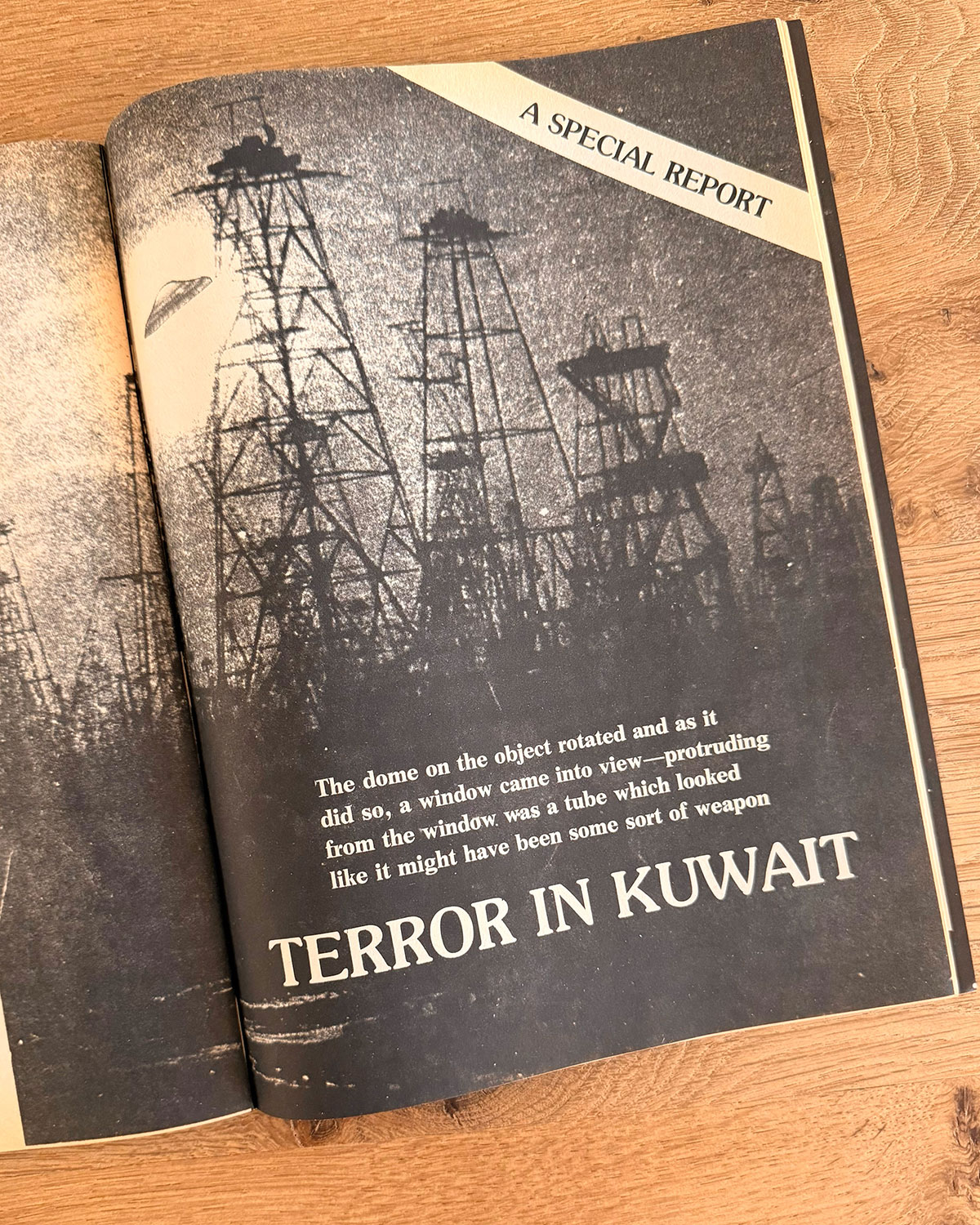
I’ve also uploaded additional clippings as a bonus read. These were declassified by the US State Department and include US embassy wires along with statements from KOC officials, KISR, and even the Ministry of Interior, who investigated a report by a Kuwait Airways pilot who had spotted an “unusual light phenomenon.”
I used to be a huge UFO buff, so I always find these stories interesting. Even if you don’t believe in UFOs, they’re still fun to read. I’ve uploaded everything to my Flickr and you can check them out there.
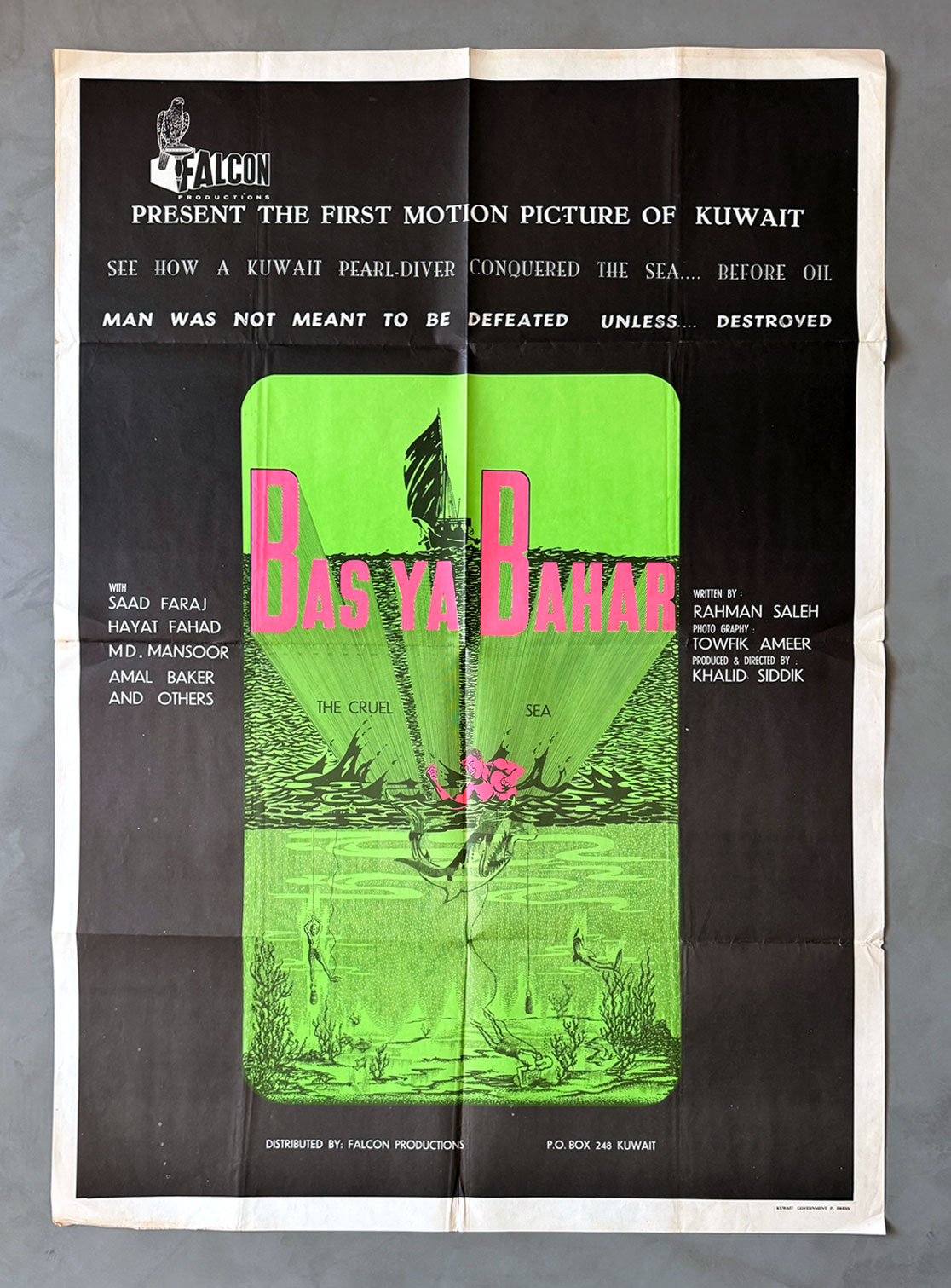
Bas Ya Bahar (or The Cruel Sea in English) is a Kuwaiti film directed by pioneering filmmaker Khalid Al Siddiq and released in 1971. It’s considered to be the first feature-length motion picture made in Kuwait, and also one of the first from the Gulf region.
I recently got my hands on what I think are two important pieces tied to the movie, the original film poster and the international film brochure, so I figured it was the right time to do a post about it again (previous post here).
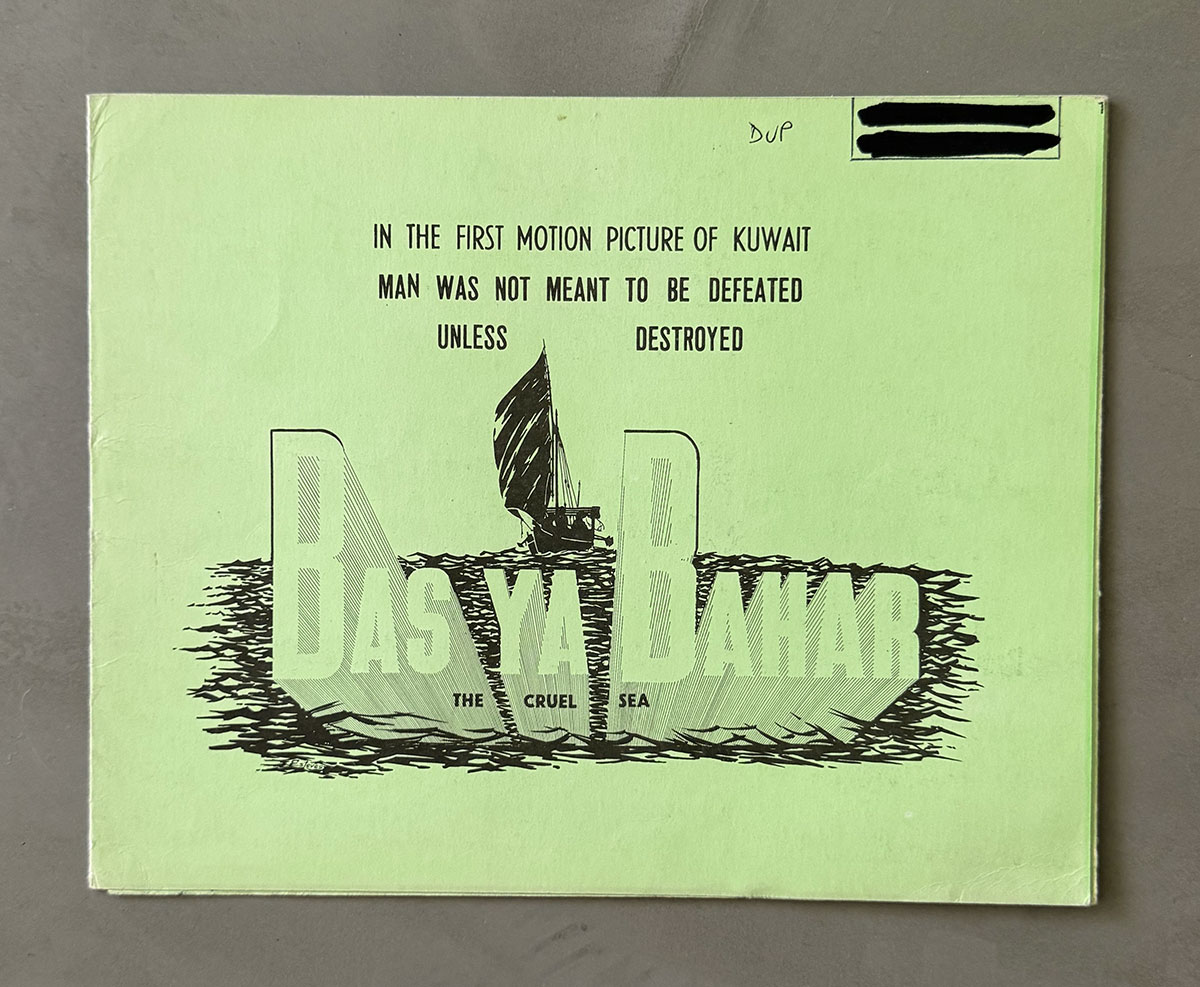
The film is set in Kuwait before the discovery of oil, when people lived in poverty, surviving on small-scale farming and fishing. Their only hope of changing fate came from the sea, where pearl divers risked everything for the chance of finding a life-changing pearl. The story follows a young man ashamed of his family’s poverty and his inability to win over the family of the girl he loves. Determined to change that, he becomes a pearl diver, returning to the same sea that left his father crippled and half-blind.
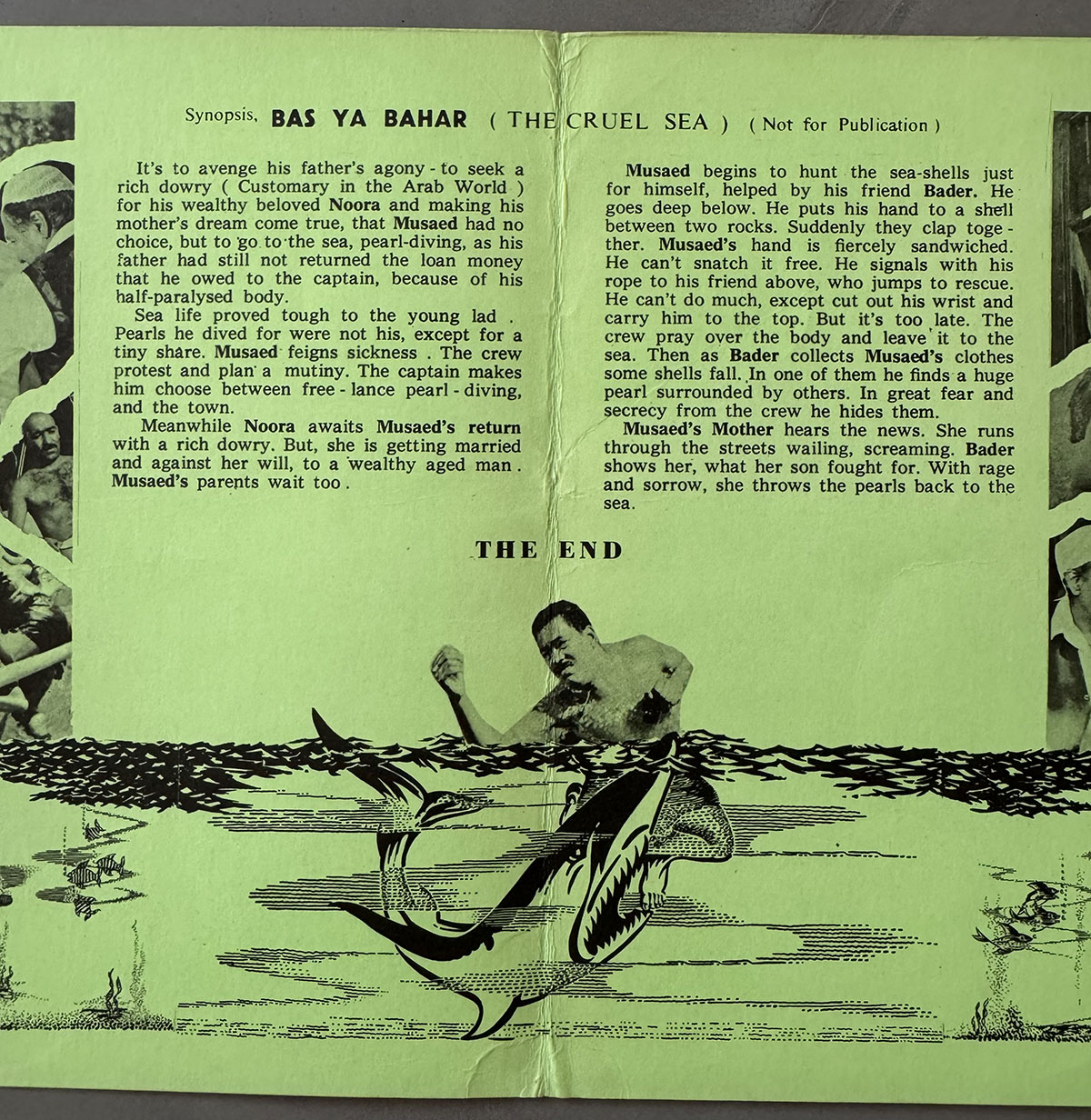
Bas Ya Bahar starred the then-young, now legendary actors Hayat Al Fahad, Mohammed Al Mansour, and Saad Al Faraj. The film was selected as the Kuwaiti entry for the Best Foreign Language Film at the 45th Academy Awards, but was not accepted as a nominee.
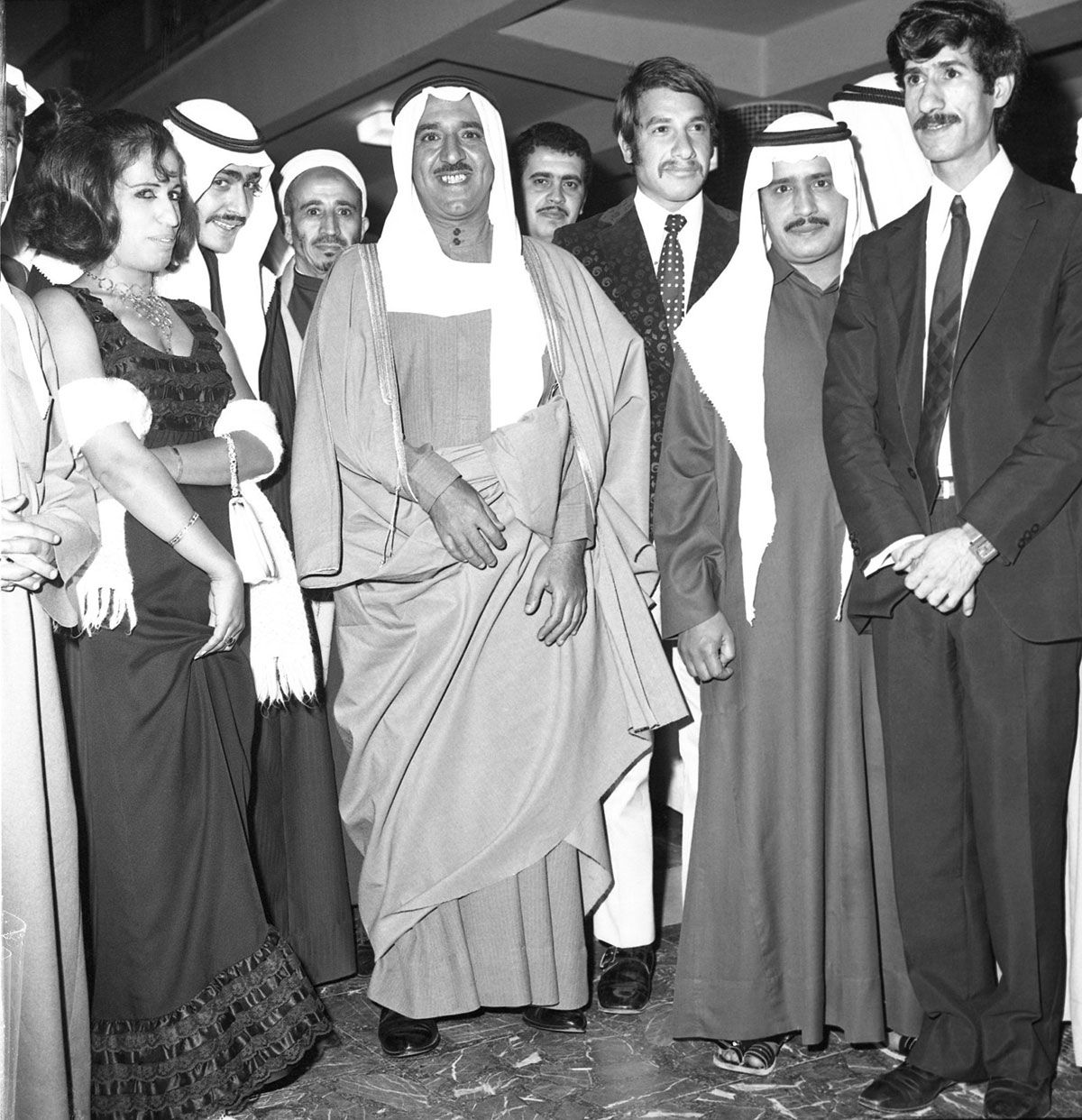
I purchased the poster from a guy who watched the movie at a film festival in Algeria back in 1975. He got the poster from Khalid after the show and kept it stored away until I bought it from him. What struck me most about the poster were the colors. Everything I’d seen related to the film was always in black and white, so the neon green and pink instantly caught my attention. The Brochure is also in great quality and is in three languages, English, Arabic and French.
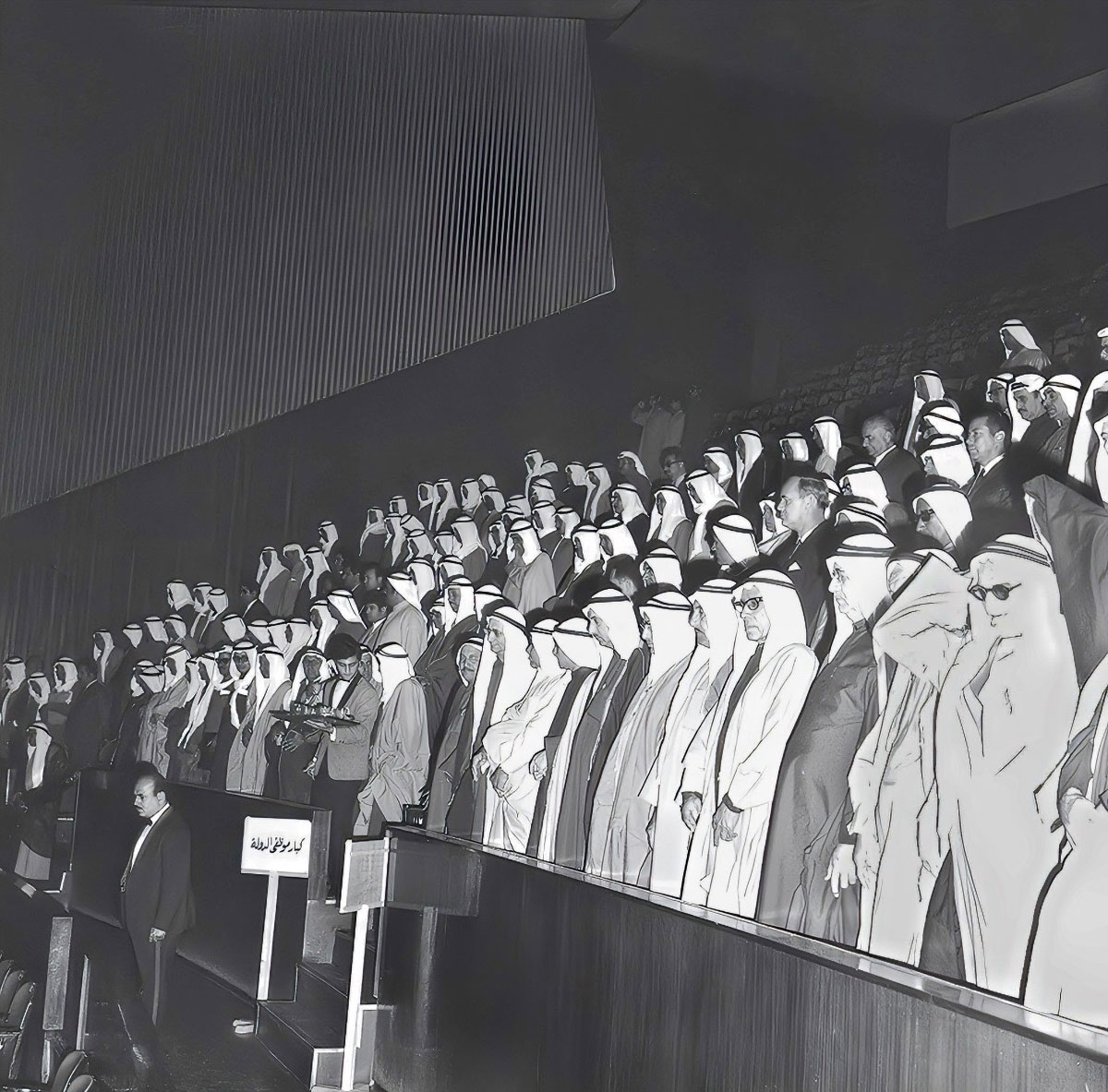
I took a few photos of the poster and scanned the brochure since I don’t think many copies are still around today and so I wanted to share them. I also reached out to @badshaiji to see if he had any photos in his collection, and he did. The black and white shots are from him and were taken at the film premiere at Cinema Al Andalus on 03/27/71.
Khalid Al Siddiq passed away in 2021 at the age of 76. If you want to watch the film, it’s on YouTube and I’ve embedded it below.
I’ve uploaded all the photos in their original resolution to my Flickr account, you can check them all here.
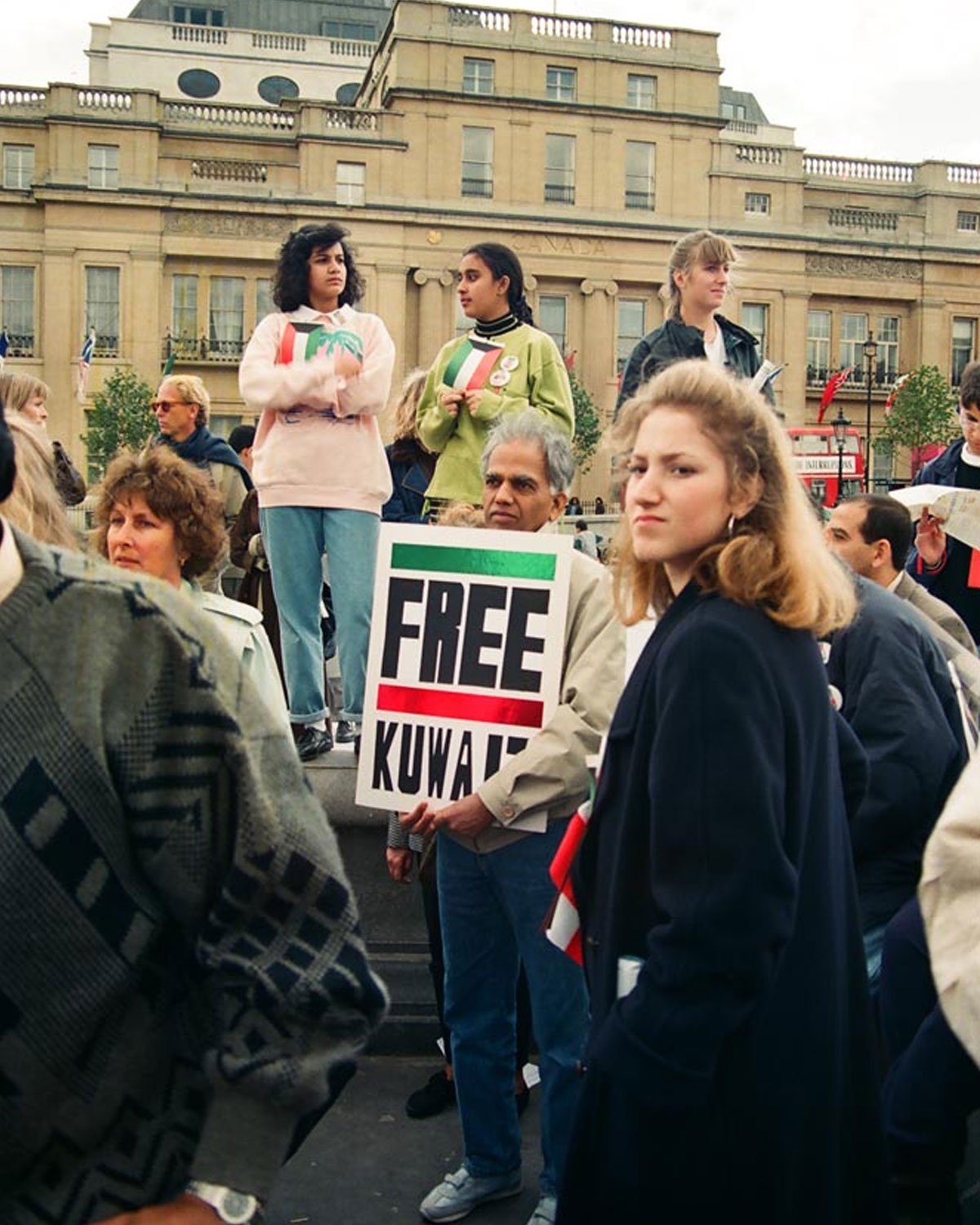
Today marks 35 years since Iraq invaded Kuwait, starting the Gulf War. I was in Kuwait and just 11 years old when I woke up that morning to find out what had happened. We had just finished celebrating my younger brother’s birthday the night before, so it took a while for me to grasp how much life was about to change.
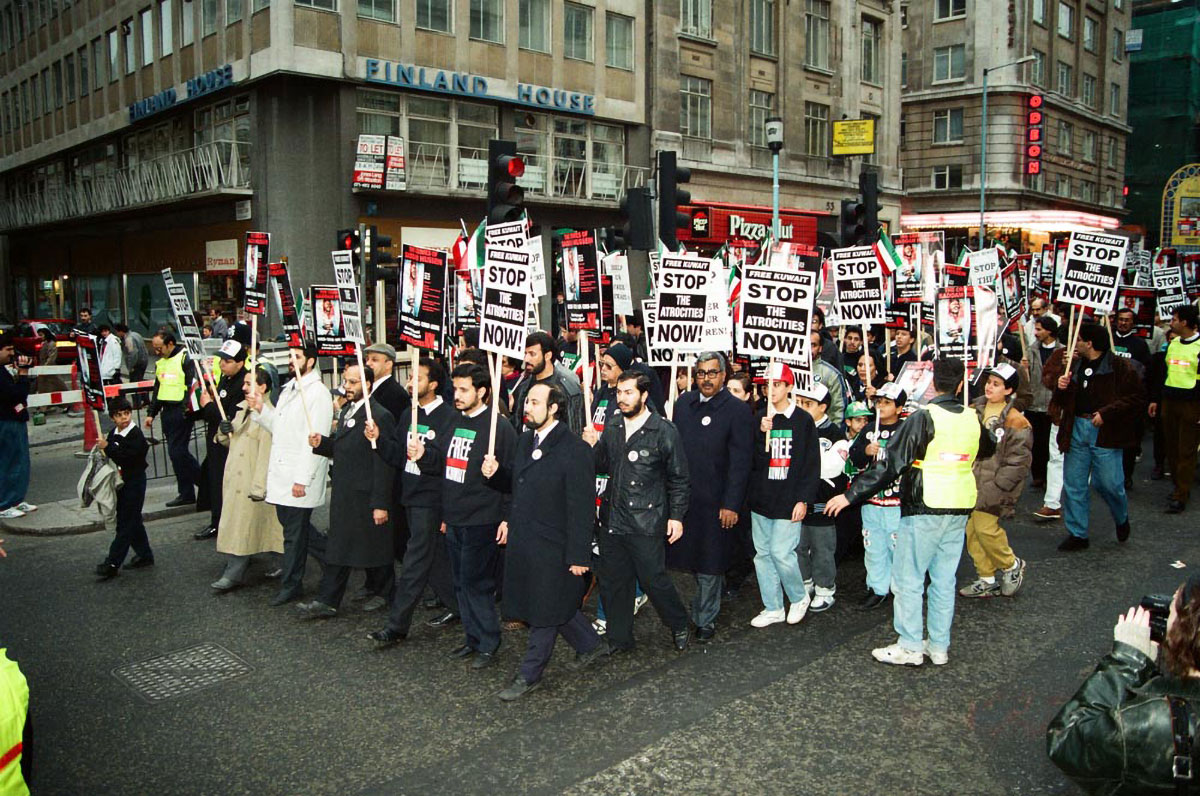
My family stayed in Kuwait for six weeks before fleeing by road to Lebanon, where I lived until the war ended and we moved back to Kuwait in the summer of 1991. Although I was young, I have vivid memories from that time, mostly tied to the media, from CNN’s Operation Desert Storm coverage to the “FREE KUWAIT” and later “Free Our POWs” campaigns, and even small things like anti Saddam car bumper stickers.
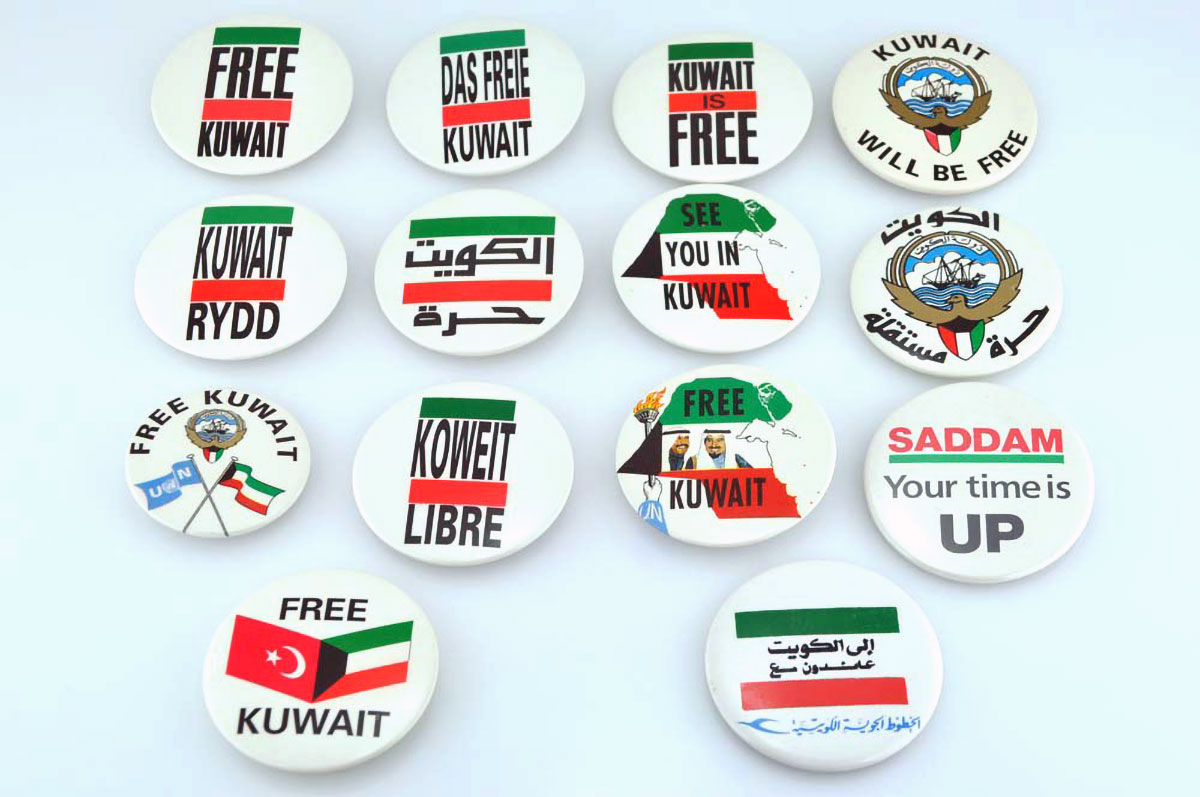
I remember as a kid desperately wanting a “FREE KUWAIT” badge or t-shirt. It was such a strong and meaningful visual that, 35 years later, it’s still a powerful image.
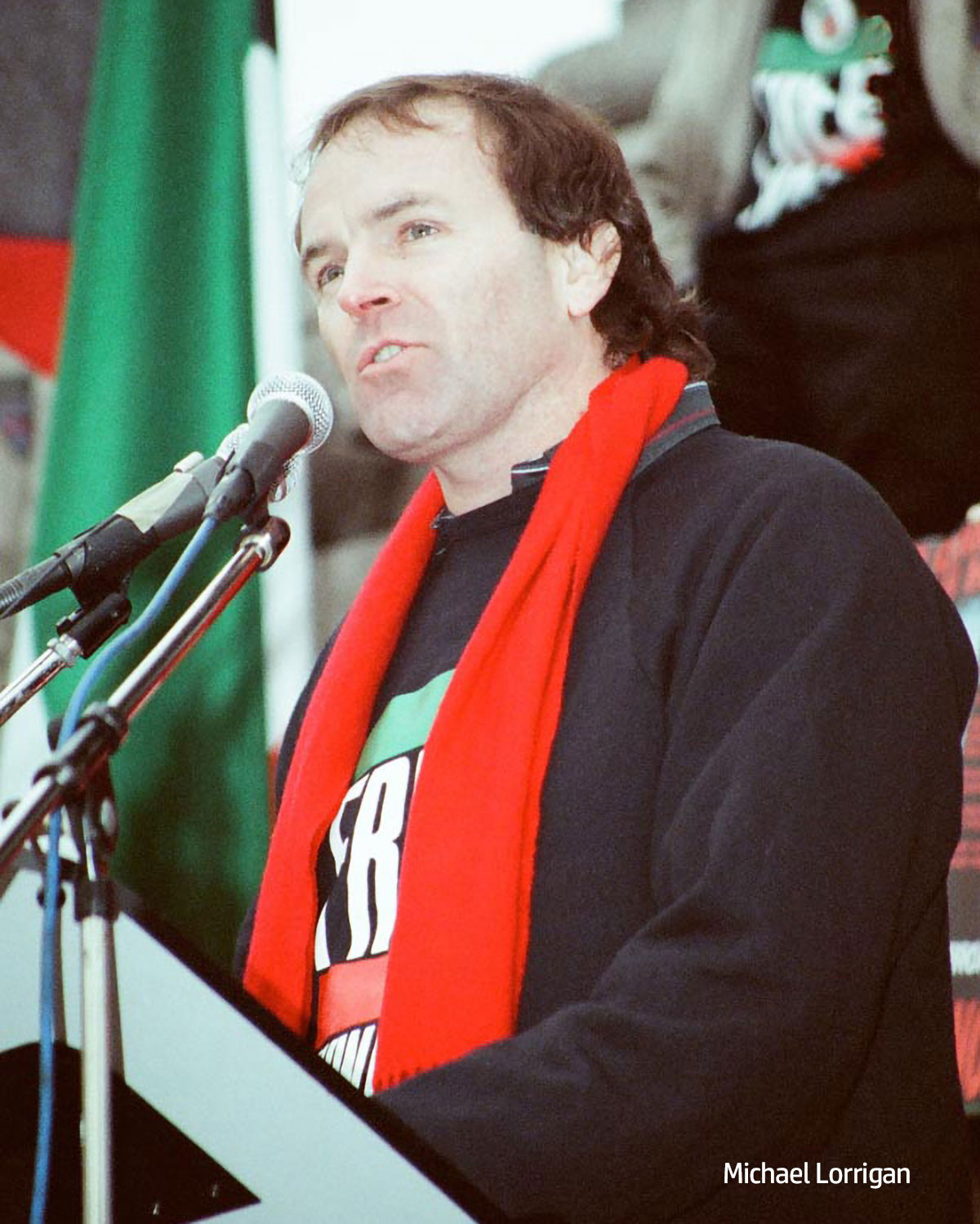
The “FREE KUWAIT” logo was designed by Michael Lorrigan with the help of the British design firm Bostock & Pollitt (now called Pollitt & Partners). Michael, who was a teacher and deputy headmaster at New English School at the time, was in England on summer break when the invasion happened. After the war broke out, he discovered the newly formed Kuwaiti media committee in London and joined them, eventually becoming one of their most dedicated members. The name “Free Kuwait Campaign” was chosen as a unifying label for various London-based groups supporting Kuwait during the invasion. When Michael shared the sample logos with the campaign group, a member called Ali Al Mulaifi suggested making the word “FREE” larger than “KUWAIT.” That became the final version. source
There is actually a great interview you can watch (it’s in Arabic) that details Michaels role in the Free Kuwait campaign which you can watch here.
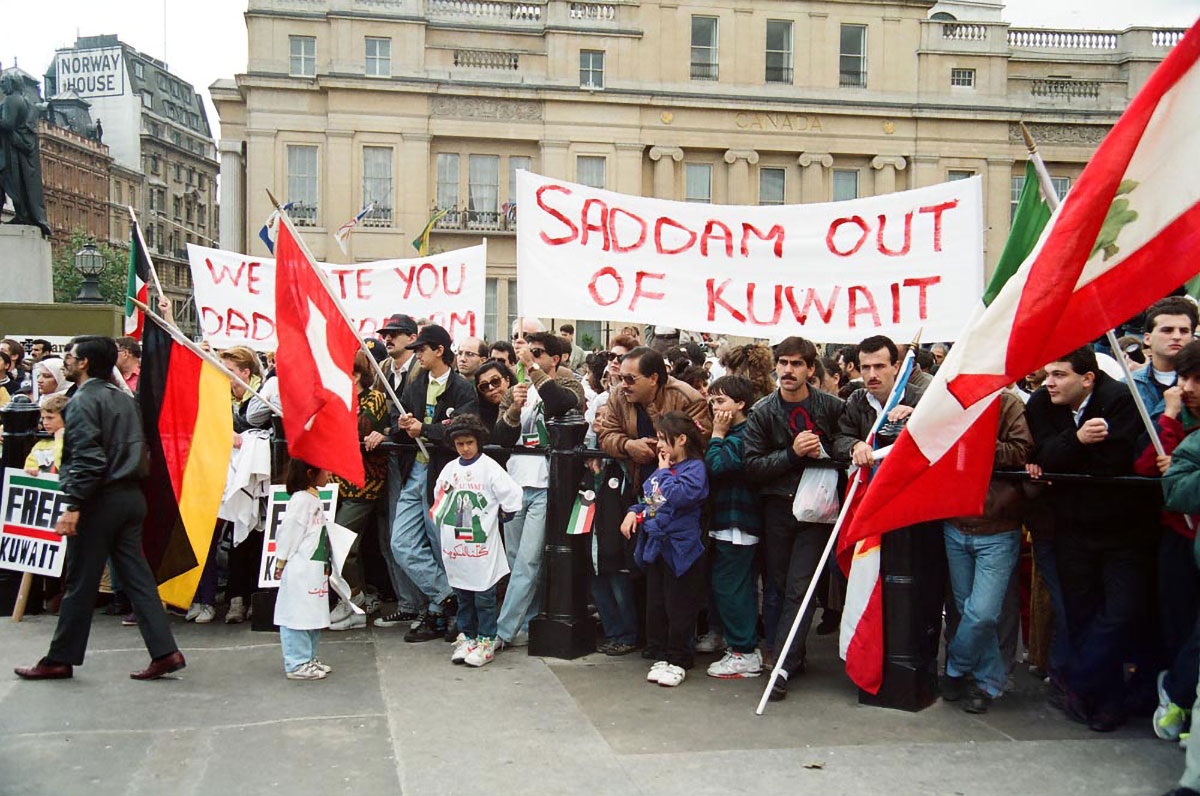
The photos in this post were all taken in London by Dr. Adel Al-Yousifi. They are part of his photo-book “A Testimony from London” and are also available online at his website, free-kuwait.net. Dr. Adel also created the website evidence-kw.net, which documents the impact of the war on Kuwait and is based on another photo-book he published in 1994.
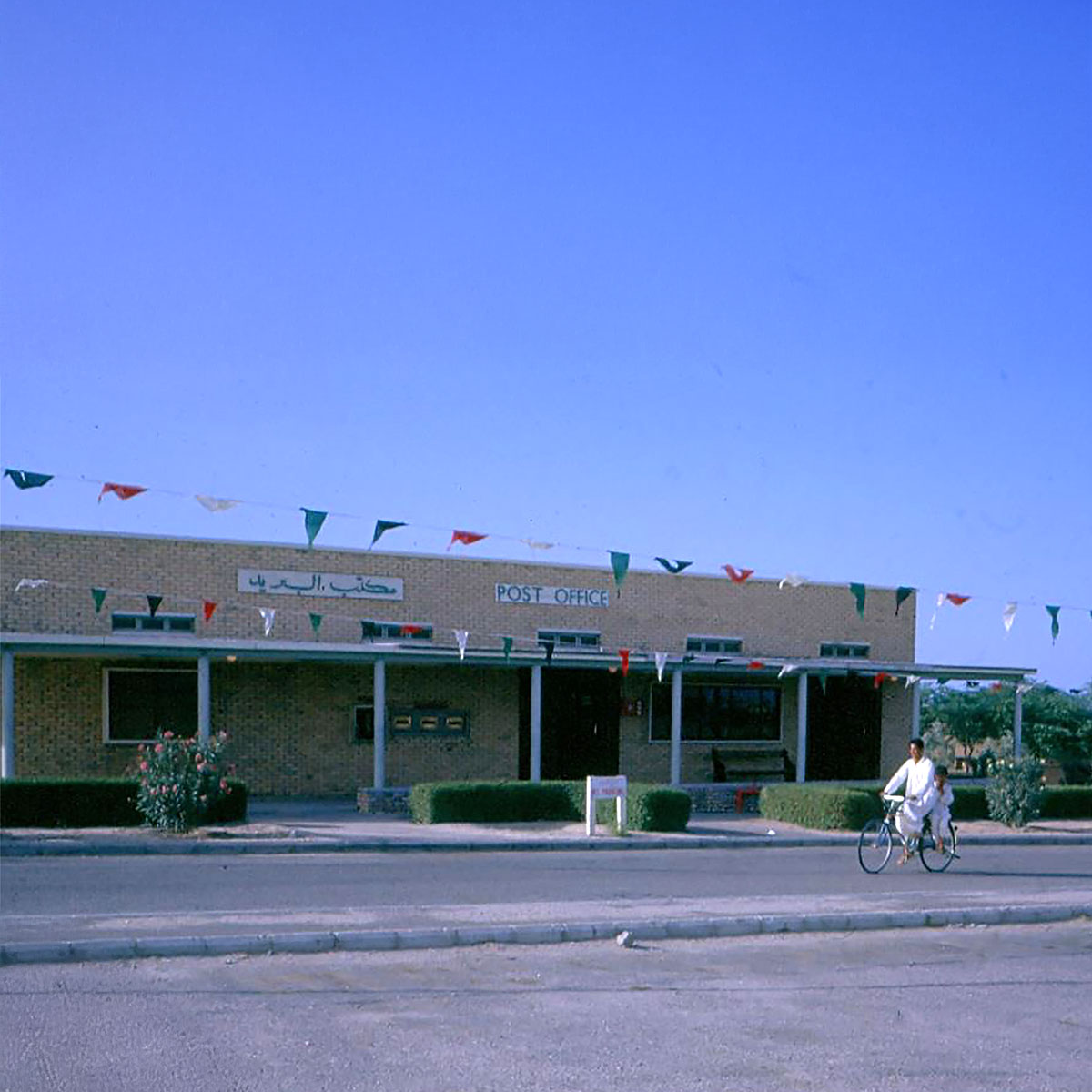
This batch of photos was taken by the parents of John Fidler, who used to live in Kuwait back in the 50s and 60s. There aren’t a lot of photos, but a few really stood out to me, which is why I wanted to share them. The main photo, for example, shows the Ahmadi post office which I thought was a great shot with the empty street, the bicycle, and the retro bunting (flags). It has a small-town America feel to it.
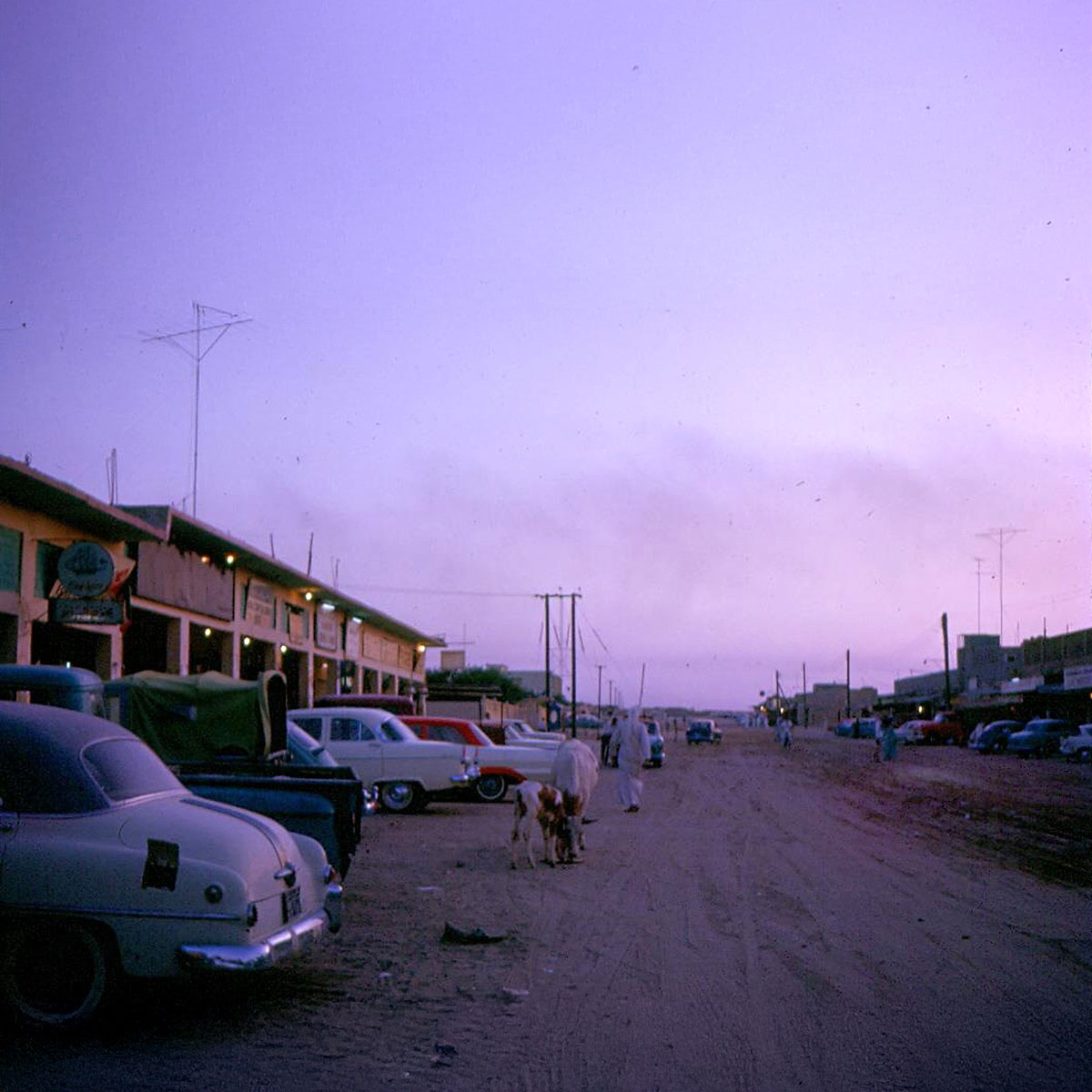
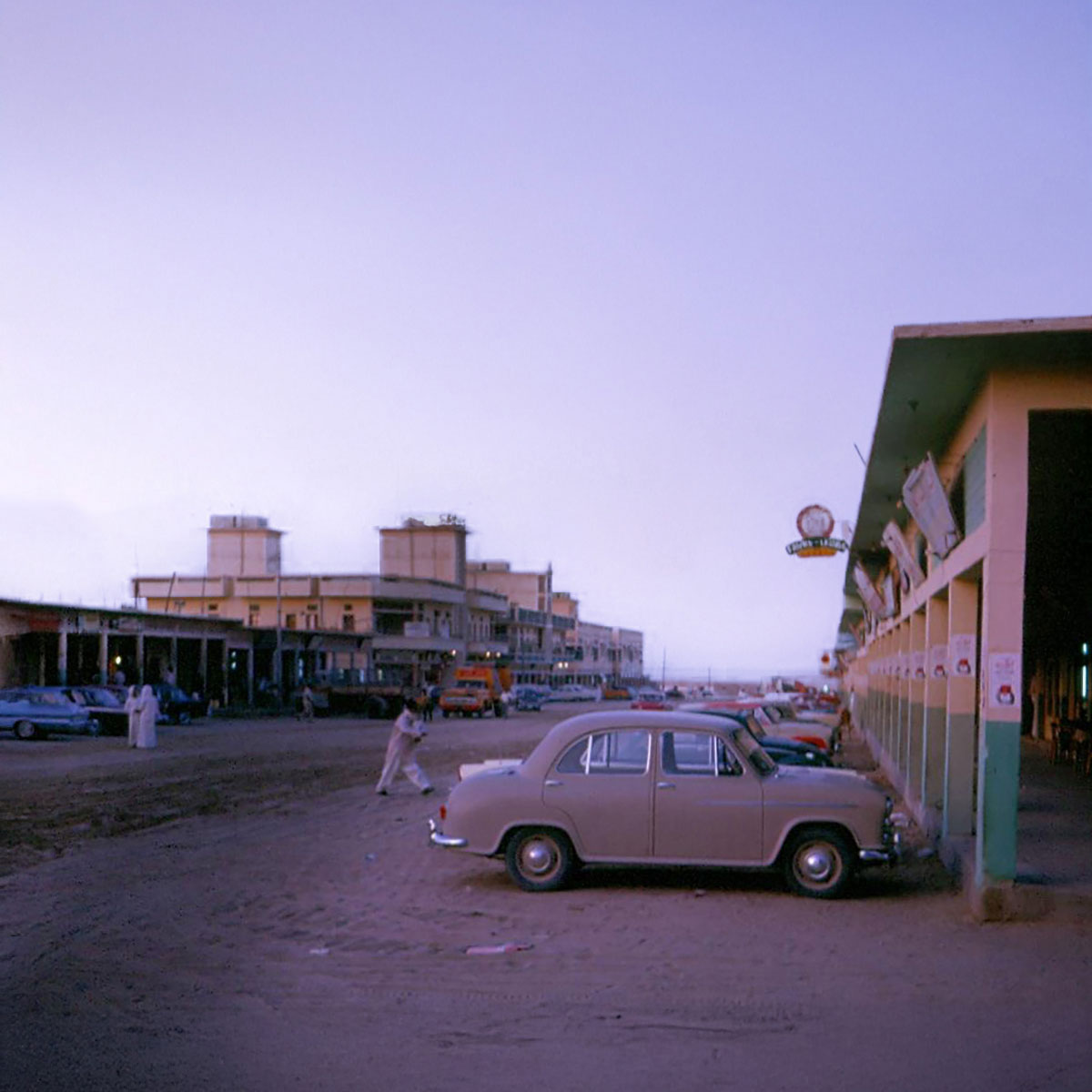
The other photos I really liked are of the Fahaheel high street. It wasn’t paved back then, and there’s a cow in the middle of the street eating trash. This is the second photo I’ve seen of that street with what I’m guessing is the same cow, so it must have lived there.
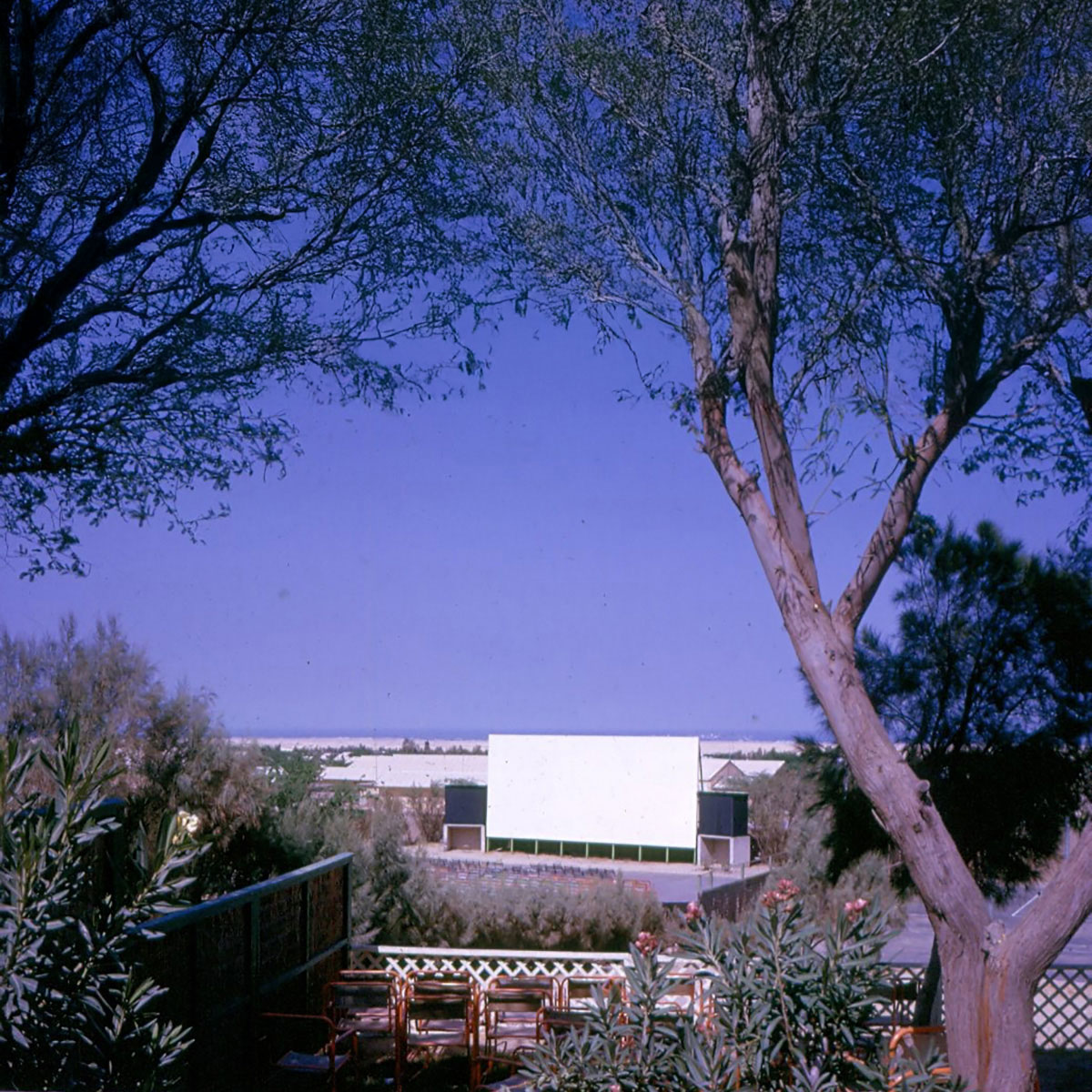
The rest of the photos are just random bits and pieces. The outdoor cinema above was taken at the Hubara Club in Ahmadi. To check the rest of the photos out, click here.

Originally from California, Claudia Farkas Al Rashoud has been working in Kuwait since 1979, when she became the first professional female photojournalist for the Arab Times newspaper. Claudia still has all the negatives and slides from the photos she took and has been incredibly kind in digging through her archives to find images I’ve requested. I sent her a fairly long list of the most random subjects I’m interested in, and so far she hasn’t blocked me, which is good news!
The first batch of photos I’ll be sharing from her archive are of Entertainment City during its construction.
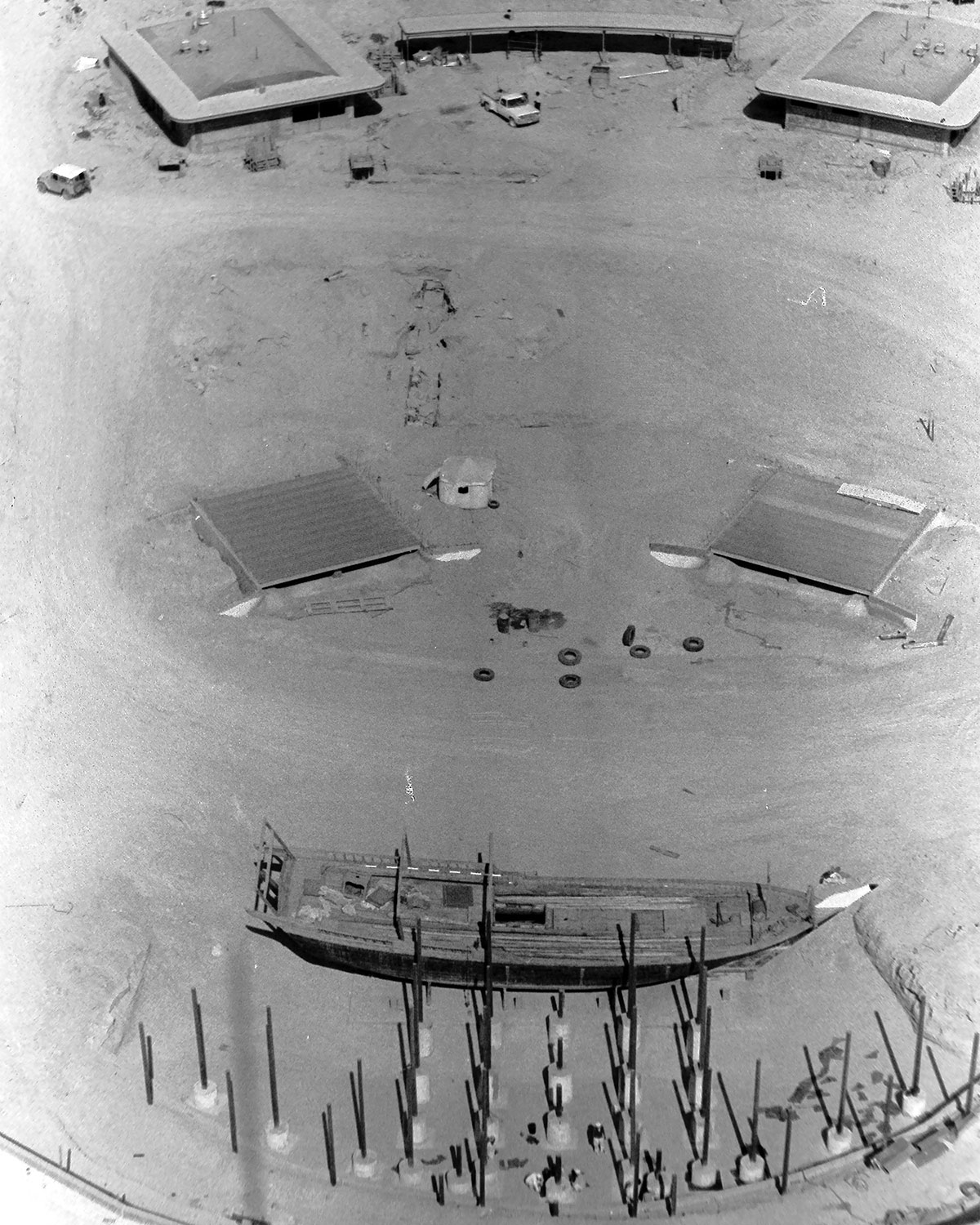
Claudia had taken photos and written a number of articles on Entertainment City for the Arab Times and other magazines. At the time, Entertainment City was the first theme park in the region and Kuwait’s most complex construction project, so it was big news. The design was handled by VTN, an American consulting firm, while construction was a joint venture between the Kuwaiti company International Contractors Group (ICG) and Castelli of Italy.
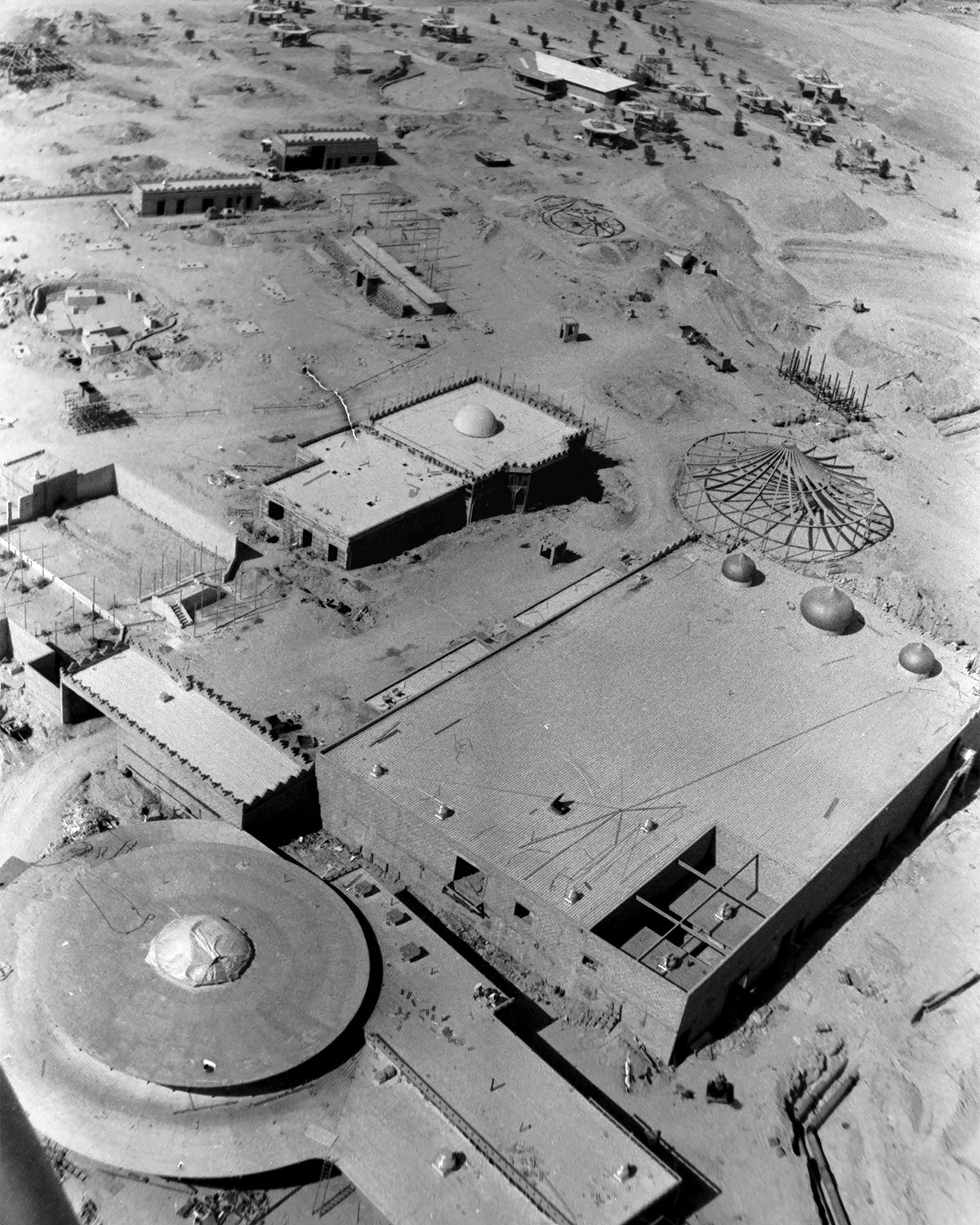
The park was divided into three main areas: Arab World, International World, and Future World. The contract was valued at KD 16,845,281, with around KD 1.8 million allocated to just two rides, Sinbad the Sailor and the African Boat Ride. Construction began in February 1979 and was commissioned by the Ministry of Public Works. At the time, it was one of the most ambitious and impressive projects ever undertaken in Kuwait. The park even featured Kuwait’s first railway line, which ran for two kilometers.
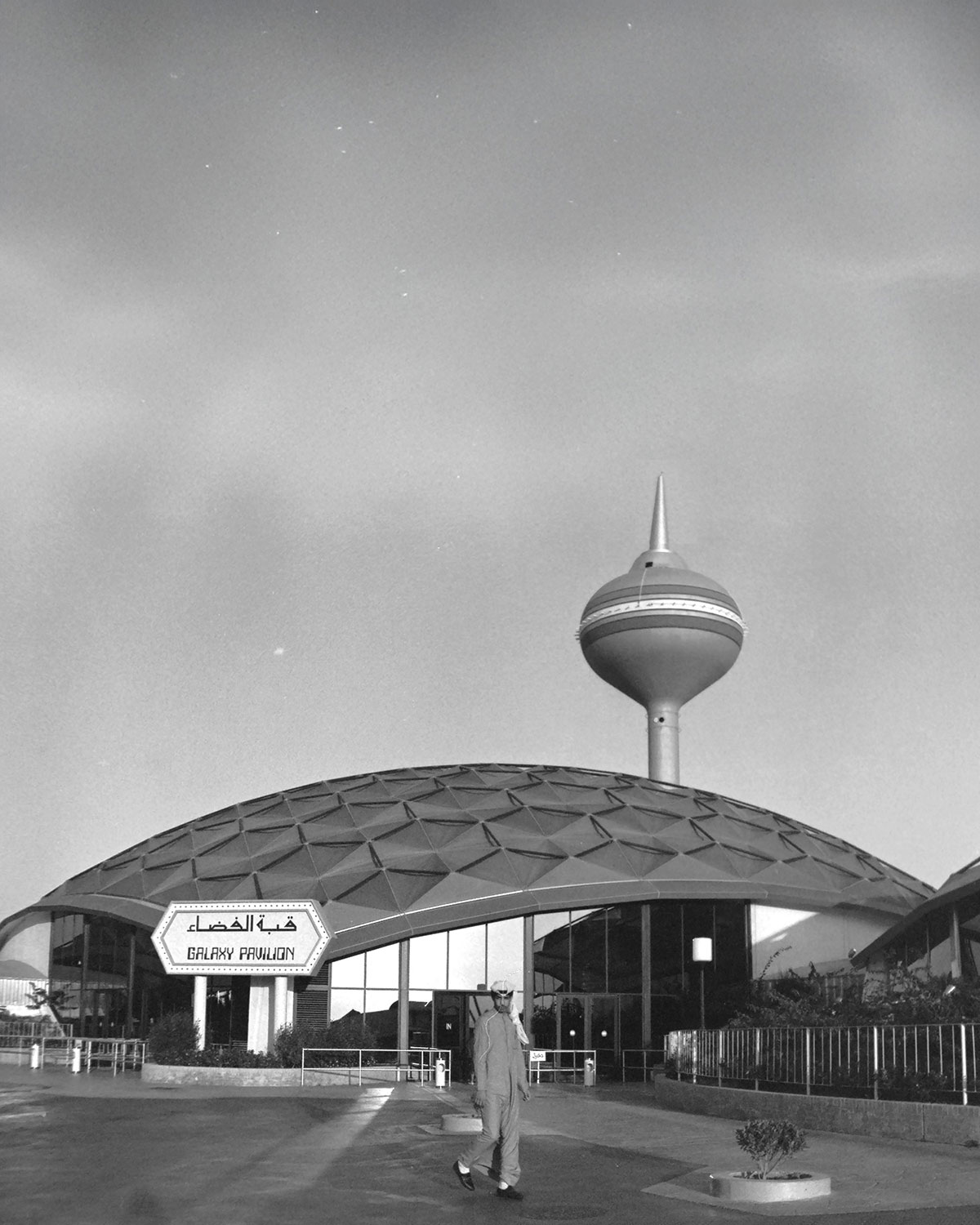
The photos she has are from different points in time, starting from the construction phase to after the park was completed. The aerial shots of the construction site were taken from the Space Needle in Future World. You can check out all the photos on my Instagram account.
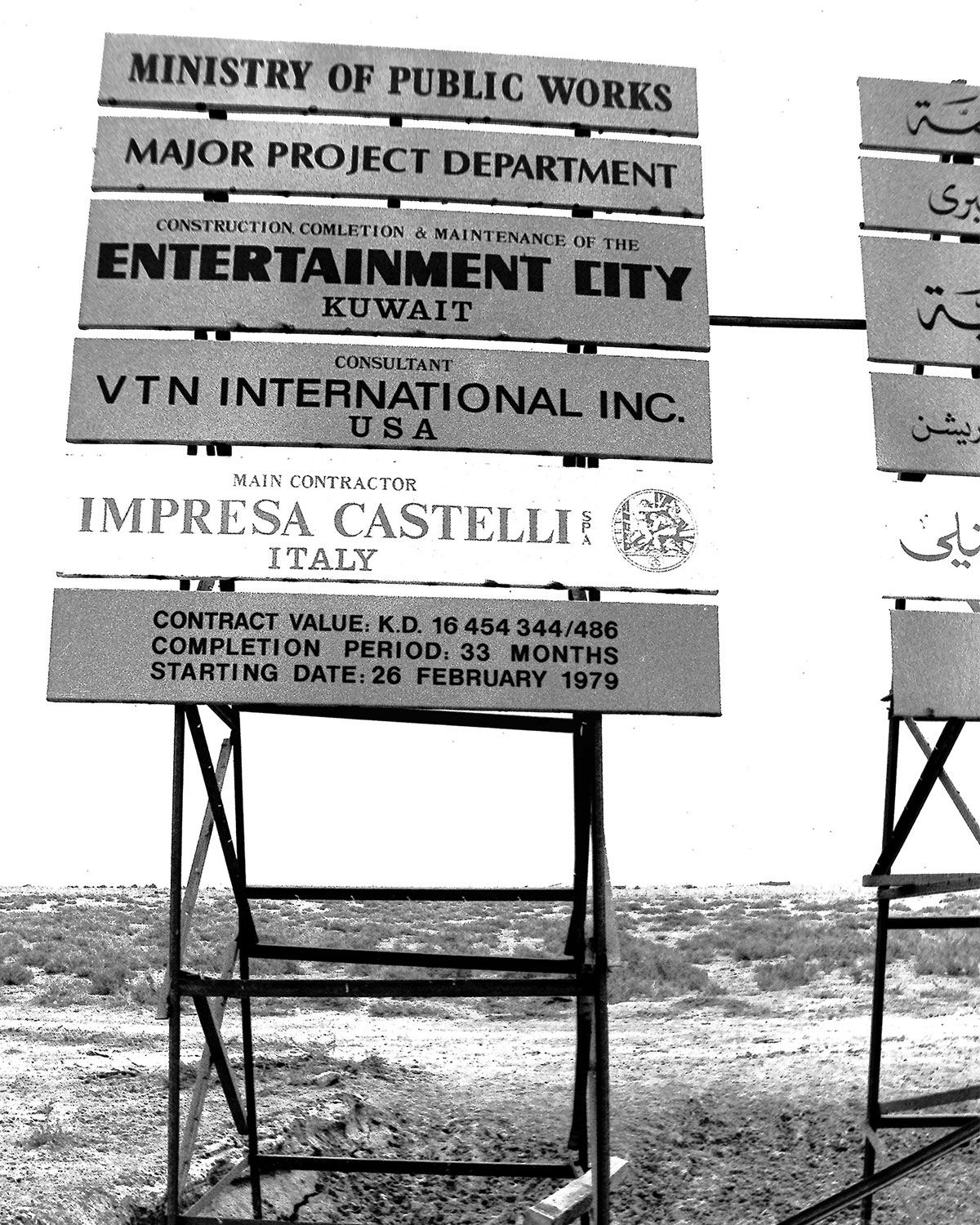
If you’re interested in more of Claudia’s photos, her books are available for sale at the CAP Bookshop in Shuwaikh. Claudia is also the co-founder of Touch of Hope, the Kuwait’s largest animal shelter. @claudia_alrashoud
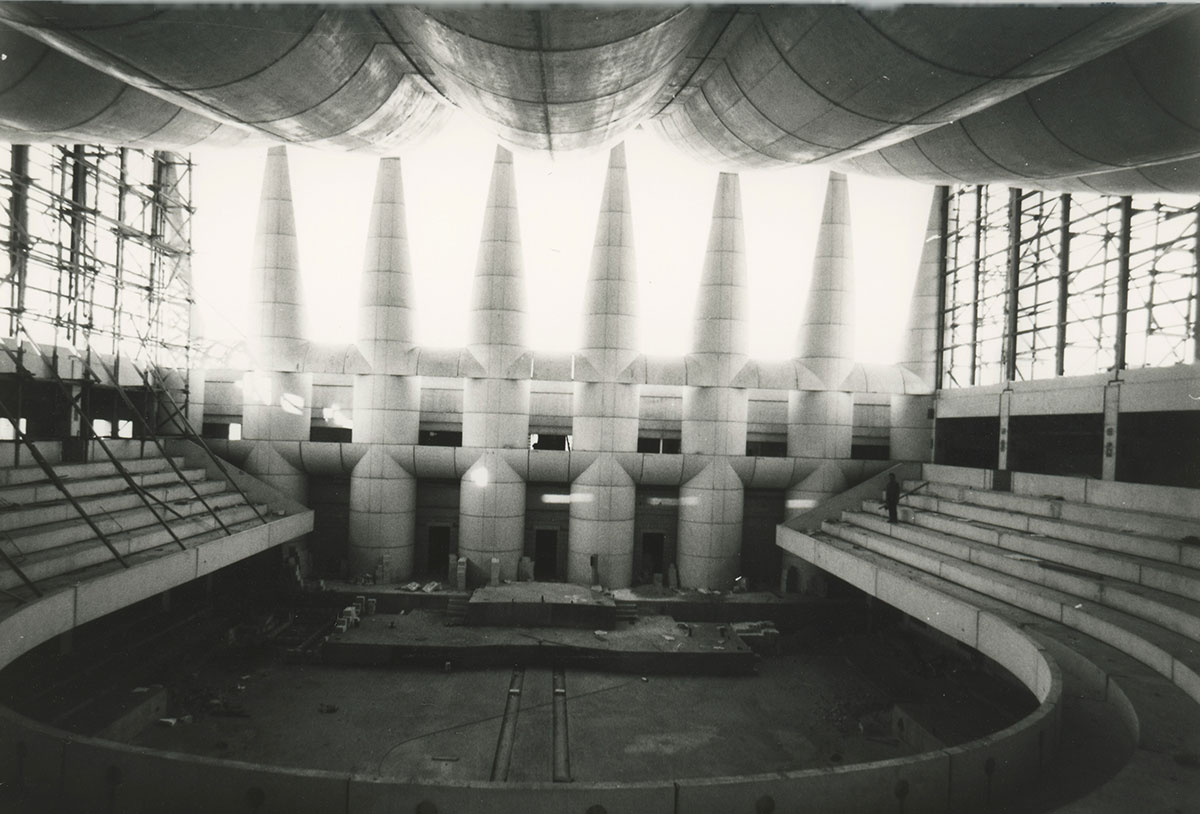
I came across these images of the Kuwait National Assembly by accident. I had recommended a friend buy a book called “Jørn Utzon Logbook Vol. IV: Kuwait National Assembly“, which covers its construction but she told me it was sold out. I started searching for a copy for her online when I stumbled across images of the National Assembly I hadn’t seen before, not even in his book on the project.
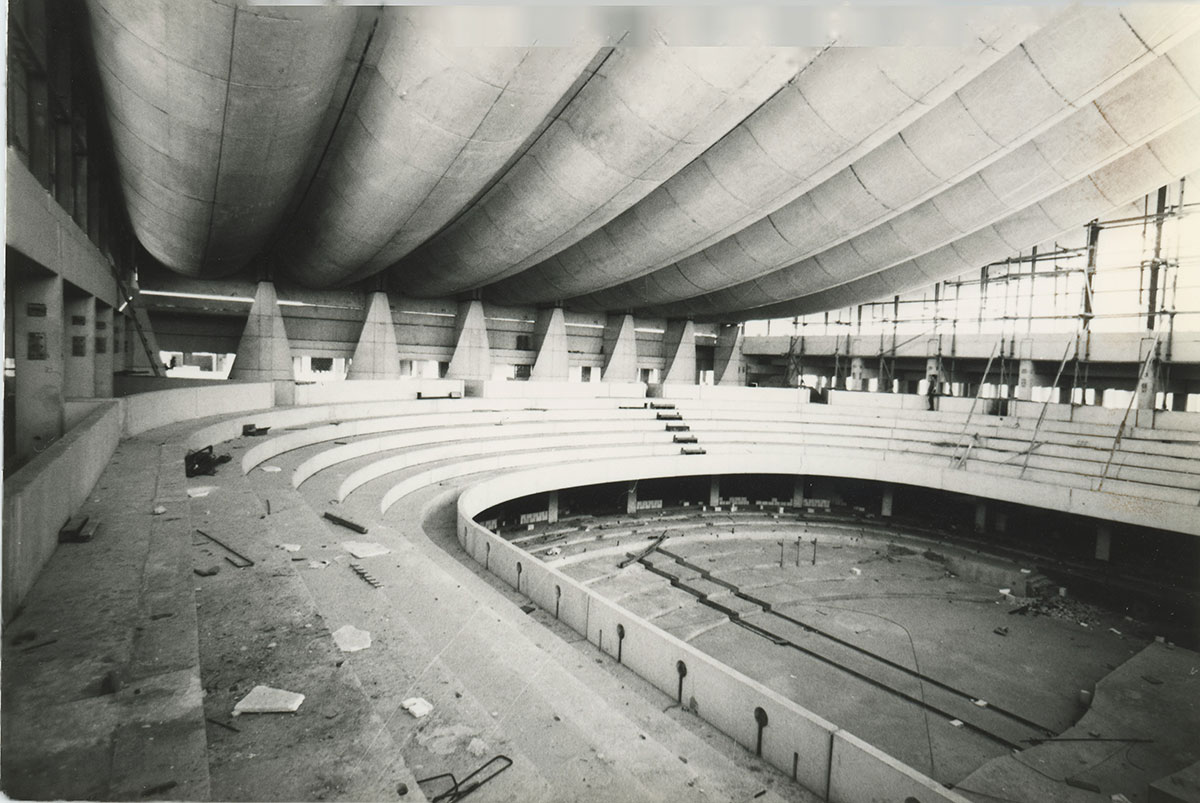
If you aren’t familiar, the Kuwait National Assembly was designed by Danish architect Jørn Utzon, the same architect behind the iconic Sydney Opera House. His design was well thought out. He organized the main building complex in a way inspired by traditional Arabian bazaars. All the departments (offices, meeting rooms, reception areas, the library, Assembly Hall, and more) are arranged along a central street, similar to the layout of a bazaar. Each department is made up of modules of varying sizes built around small patios or courtyards, all connected to the central street by side alleys. The complex was designed to be expandable at any time by adding new modules, allowing it to grow outward continuously similar to bazaars.
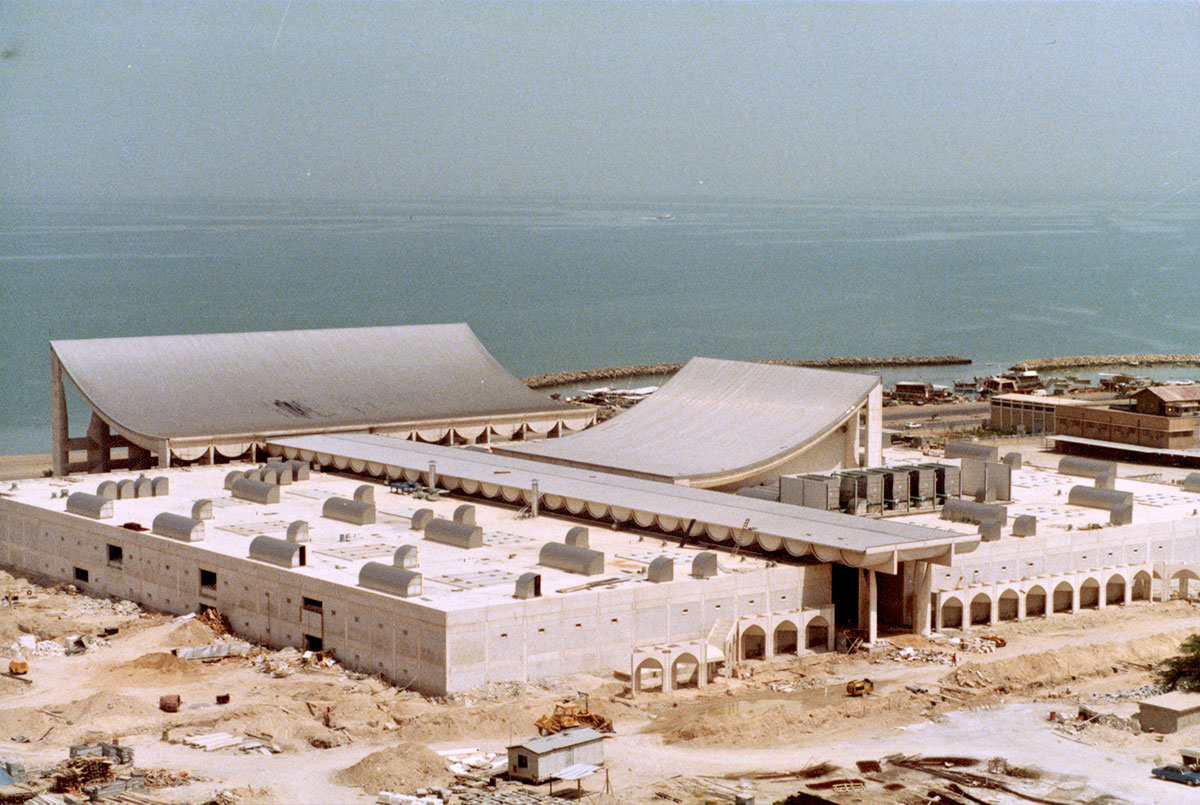
The canopy, or tent-like shade at the entrance that gives the building its distinctive look, came to him after seeing a photo of two Arabs fishing on the shore under a small sail from their boat. The sail was stretched between two poles with a beam across the top, creating a simple shaded area. He loved the way the shadow looked and thought it would be a beautiful idea to use in the building.
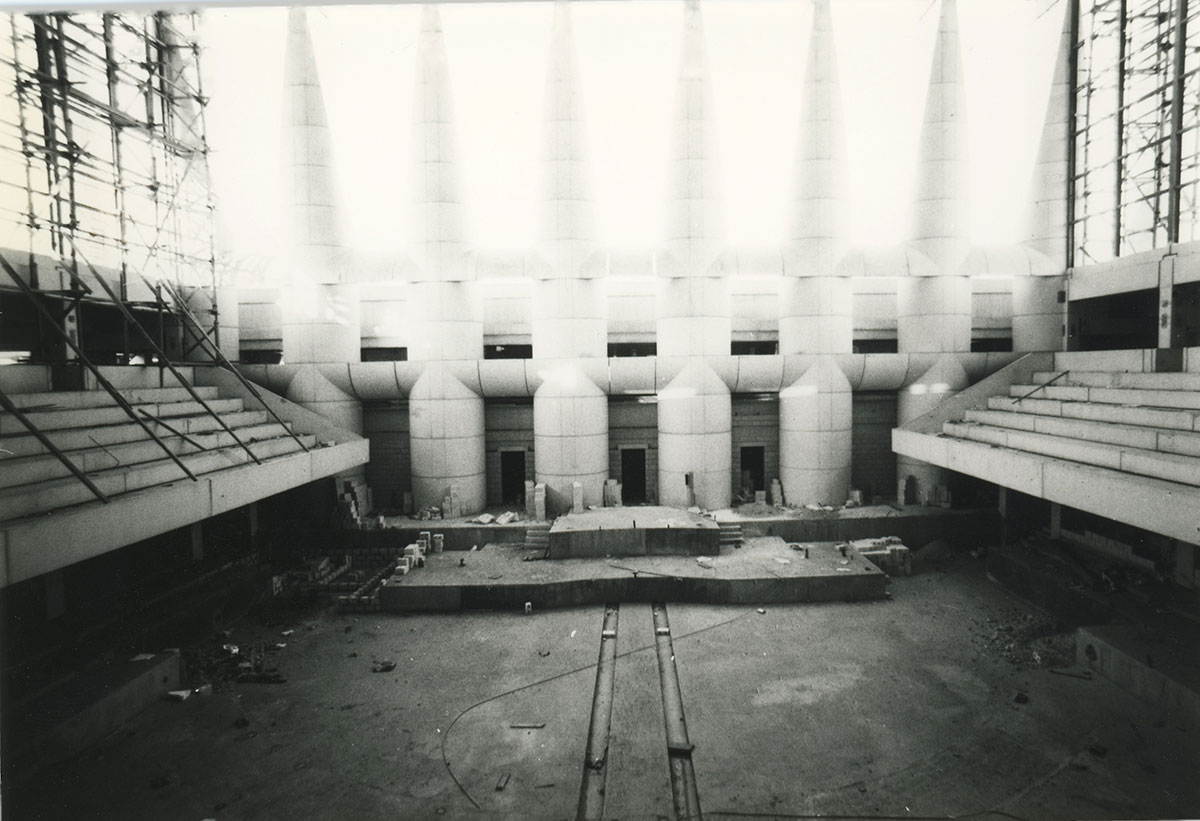
Jørn’s Logbook Vol. IV focuses on the Kuwait National Assembly project and includes behind-the-scenes documents, original drawings, stories, and photos of the construction. It was published in 2008, and copies were still available as recently as 2019, but they seem to have sold out since then.
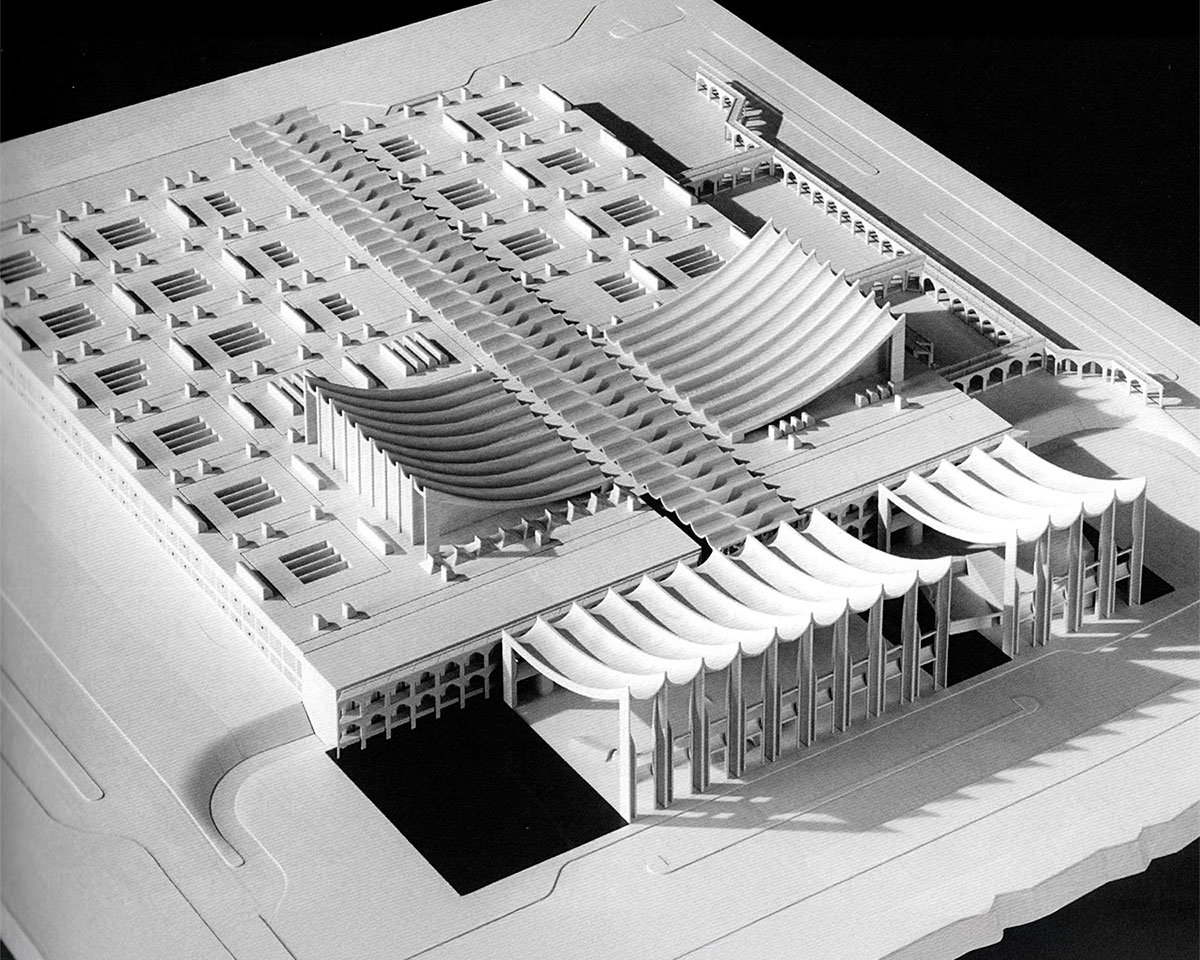
Majority of the photos I’ve shared in this post were taken from the Utzon Archive, the rest are from my copy of the book. If you want to check them all out and get access to the hi-res images, click here.
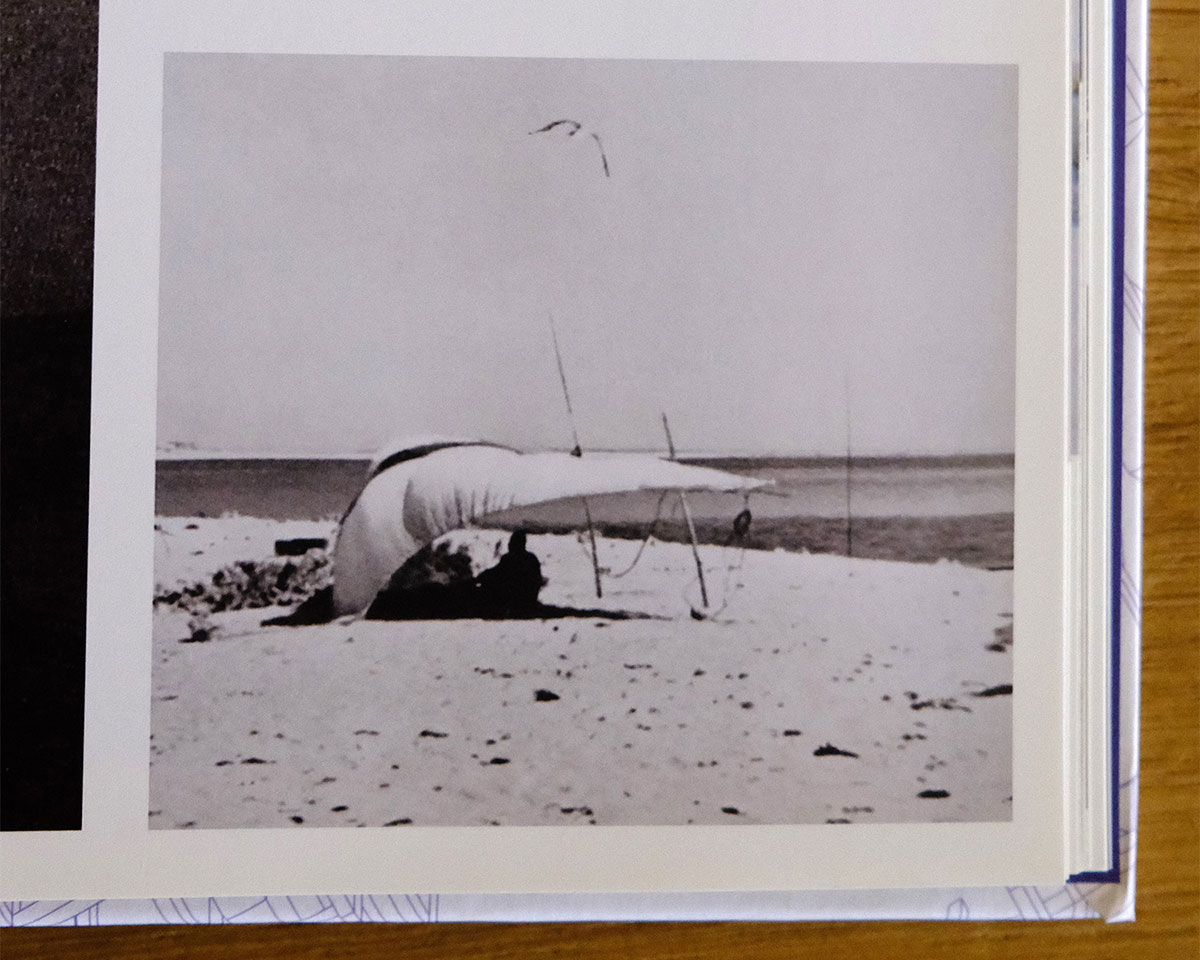
The photo above is the one I think inspired him since it was included inside his book.
The video above is also from their archive, I like it because if you forward around 2 minutes in you get to see a full 360 of the city from above. I think the video was shot from the old Kuwait Airways building.
© Utzon Archives / Aalborg University & Utzon Center.
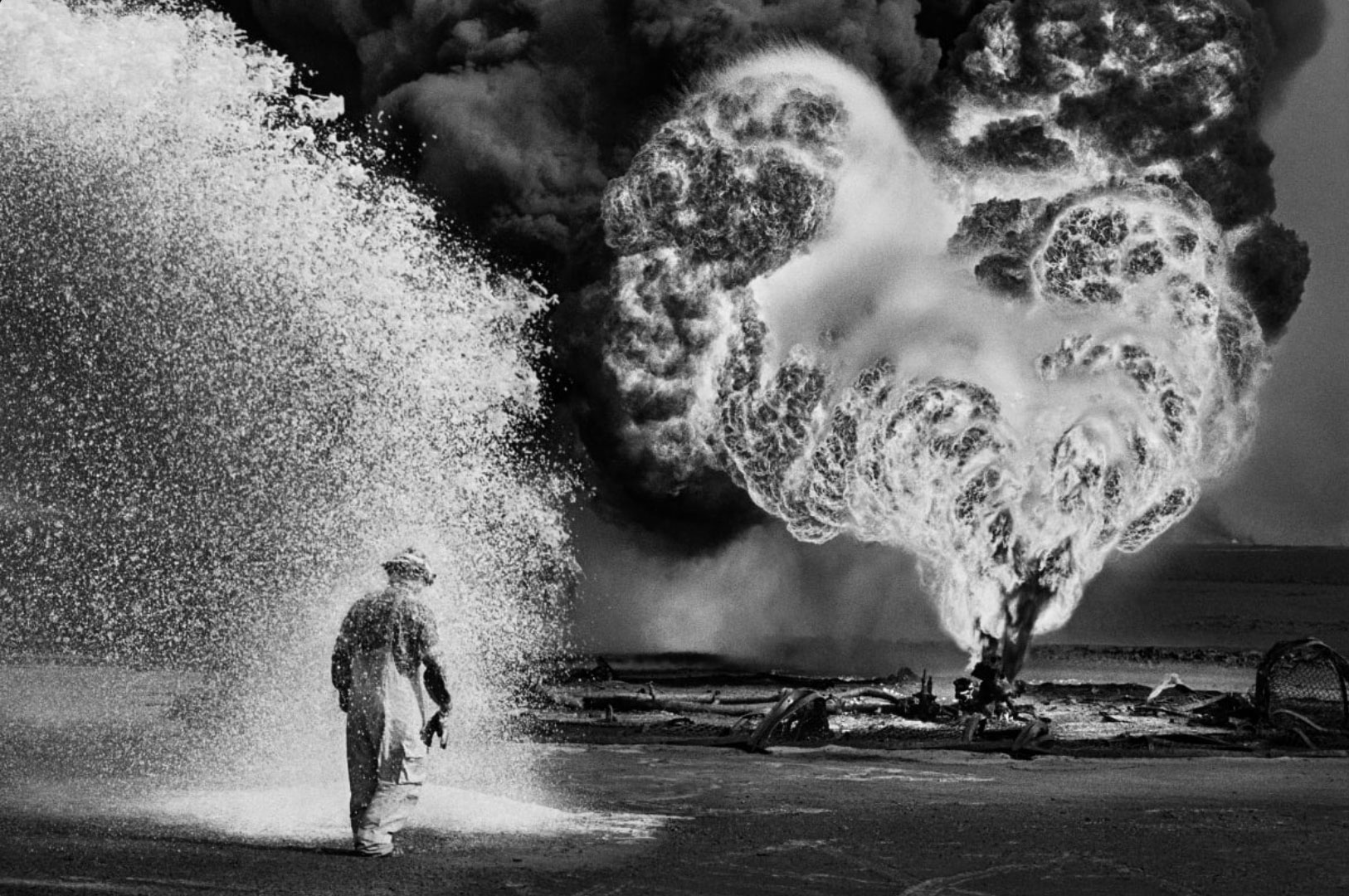
I just read that the legendary Brazilian photographer Sebastião Salgado has sadly passed away. He was widely regarded as one of the greatest documentary photographers of our time.
In 1991, just after the Gulf War, Salgado documented one of the most devastating environmental disasters of the 20th century, the oil fires. His powerful black-and-white photographs of firefighters battling huge flames and smoke-filled skies. became iconic and captured the true cost of the war.
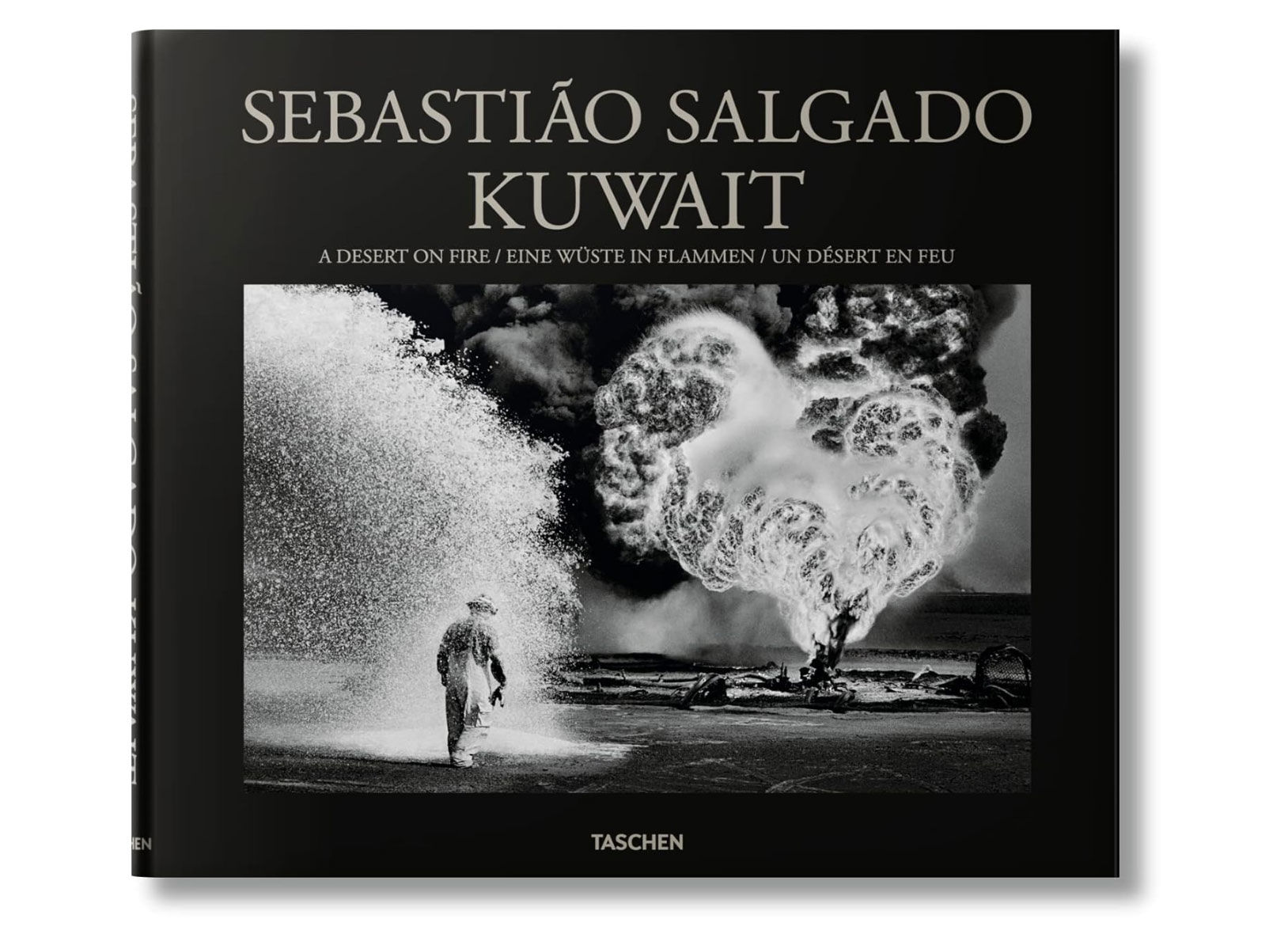
The images he captured in Kuwait continue to define how the world remembers the impact of the Gulf War. He published a book featuring those photos titled Kuwait: A Desert on Fire. To explore more of his work, visit his Instagram @sebastiaosalgadooficial.
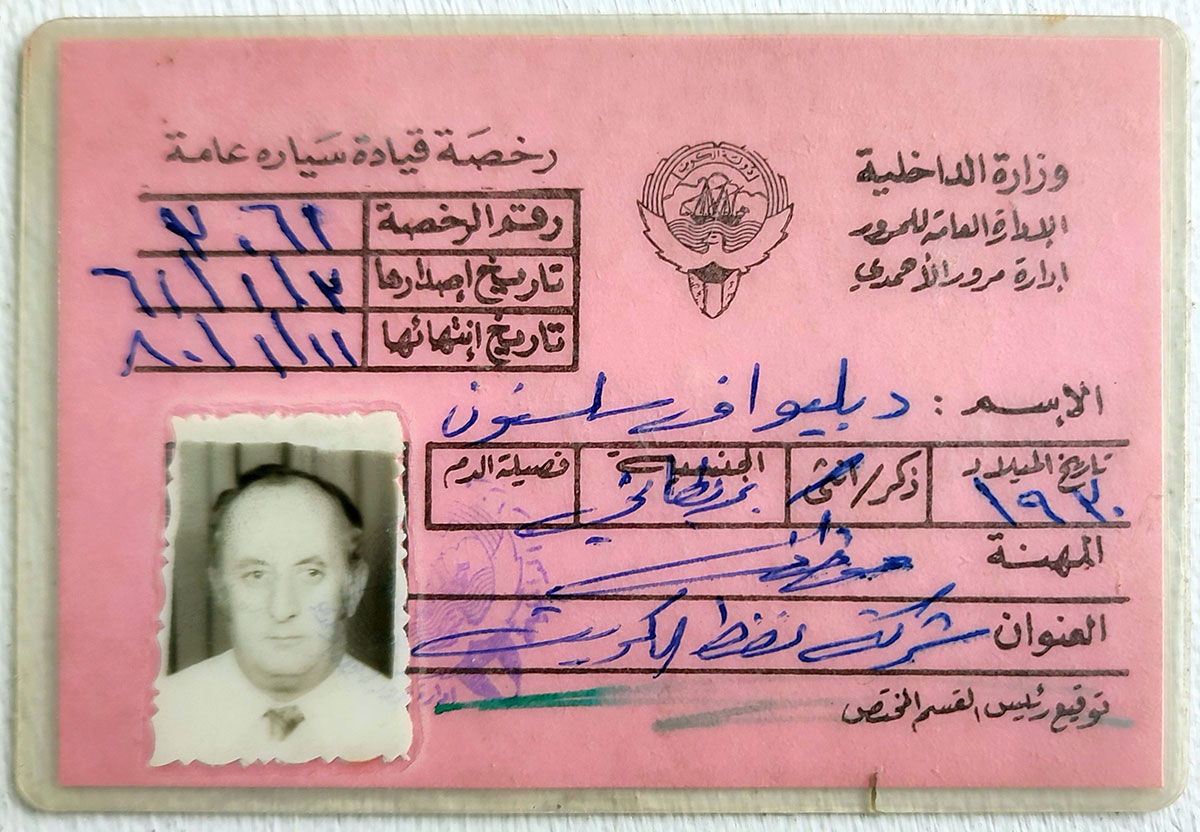
Found this driving license from 1961 for sale. It’s number 2061, I wonder if that means there were only 2000 drivers on the roads back then?
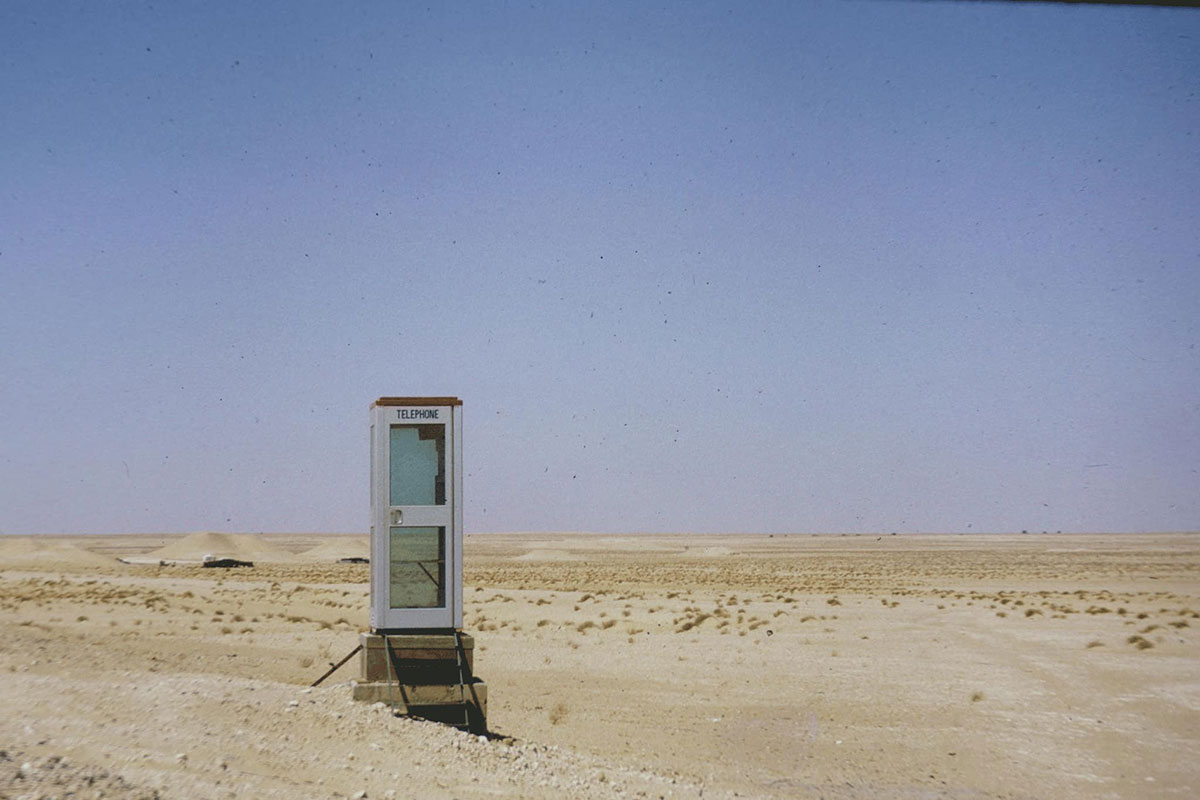
This is the last batch of photos from Ian Caldwell’s family collection.
If you missed the previous two posts, Ian was born in Ahmadi in 1955 and lived in Kuwait until 1975. He’s scanned over 300 Kuwait-related photos from his family’s archive, which he’s kindly given me permission to share.
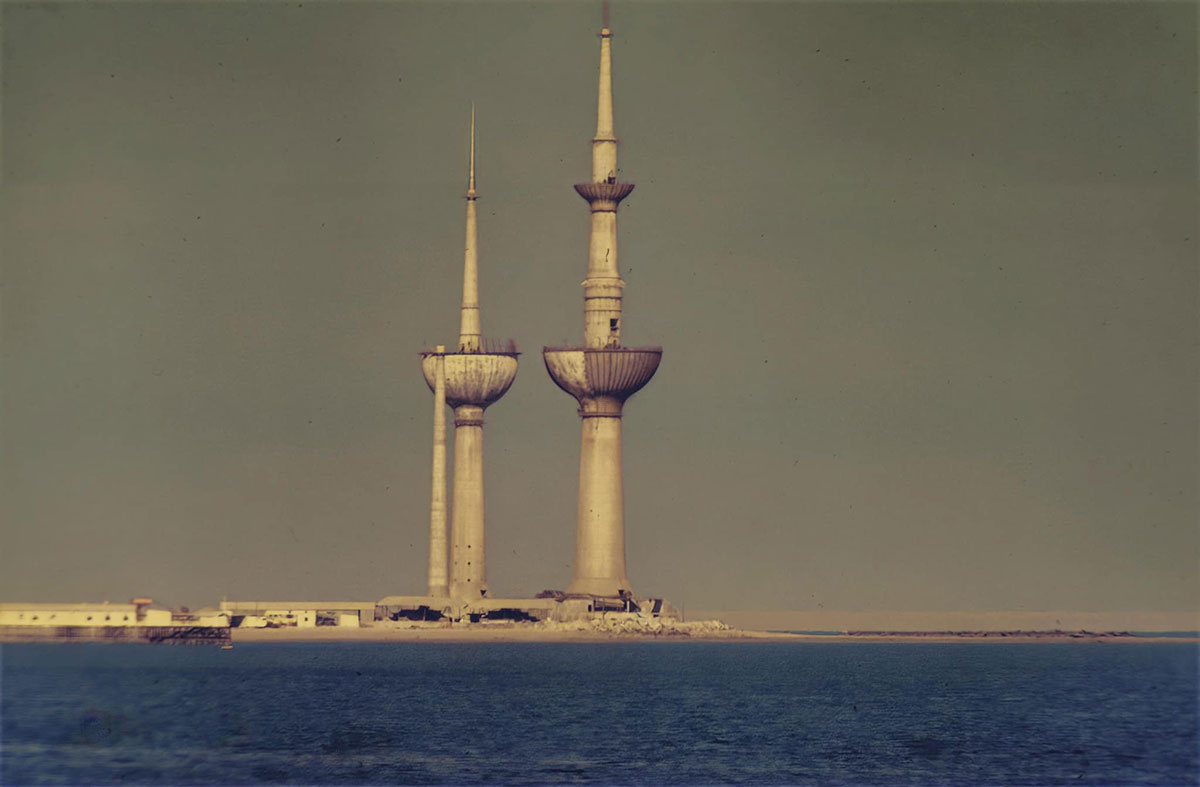
This final batch of photos isn’t categorized, other than being random scenes from around Kuwait taken in the 70s.
I really like the shot of the phone booth in the middle of the nowhere, it’s really weird, which is why I had Ian send me the original scan so I could print it out and frame it. Another favorite is the main image I used of the baqala, which looks like a scene straight out of a Western movie.
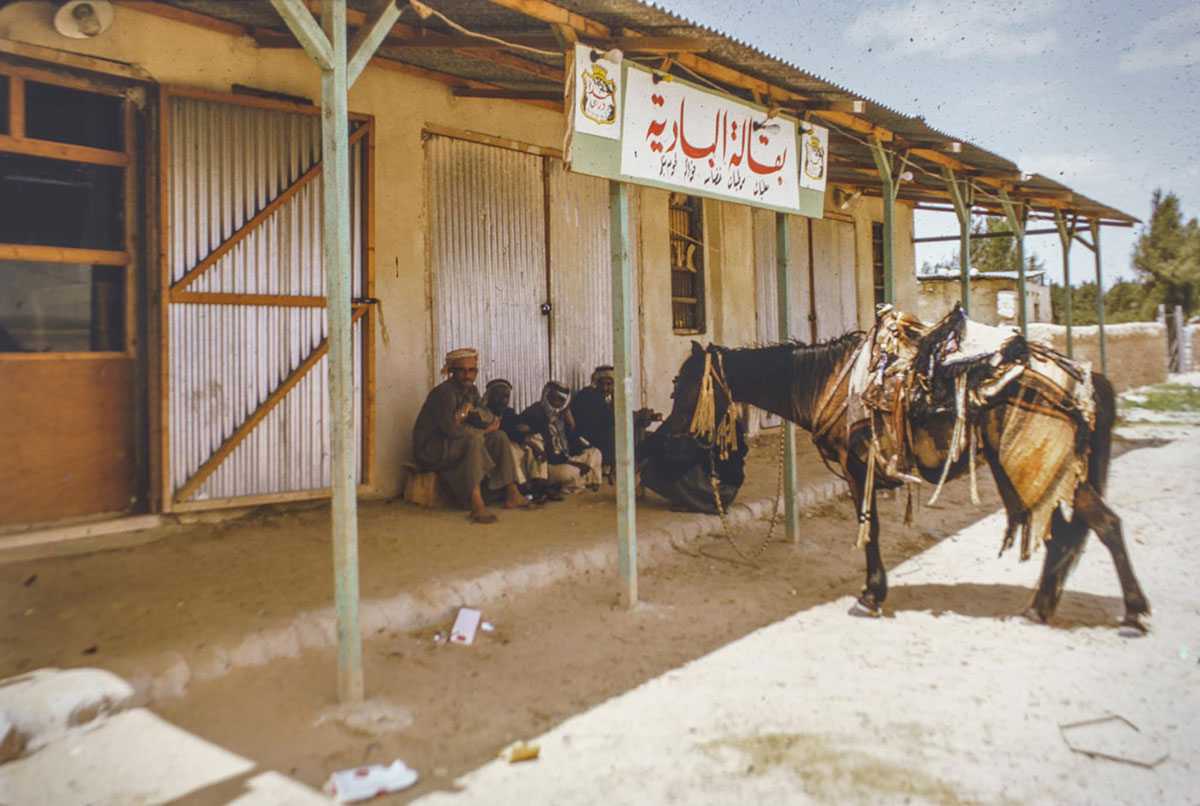
You’ll also find a couple of photos of the Kuwait Towers and Gulf Road while they were still under construction, and one of Seif Palace with the original telecommunications building going up in the background.
There are also some really odd ones I’ll let you discover for yourself. Link
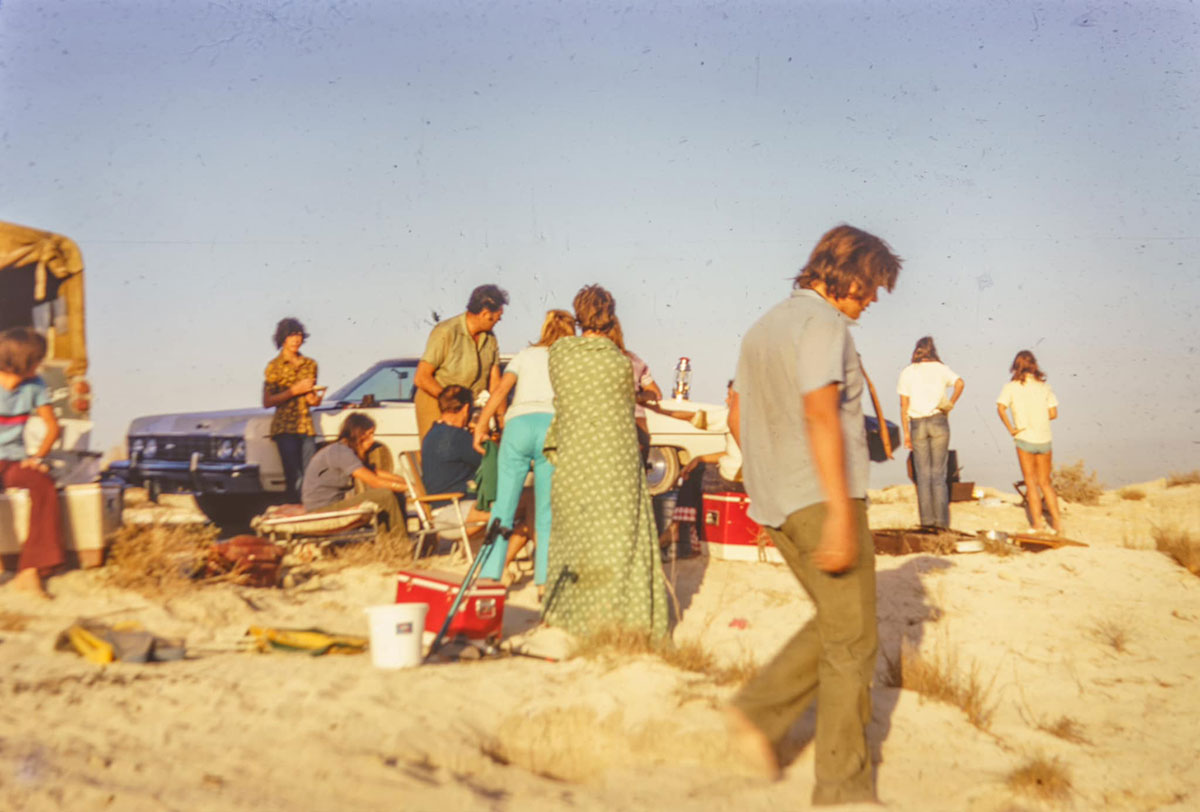
This is the second batch of photos from Ian Caldwell’s collection, and there is one more batch I’ll be sharing after this post.
Ian was born in Magwa Hospital in Ahmadi in 1955 and lived in Kuwait until 1975. He’s scanned over 300 Kuwait-related photos from his family’s collection, which he’s kindly given me permission to share. Last month I posted photos of Souk Mubarakiya and Fahaheel Market from his archive, this time, I’m sharing photos taken over various weekends and holidays between the late 60s and early 70s.
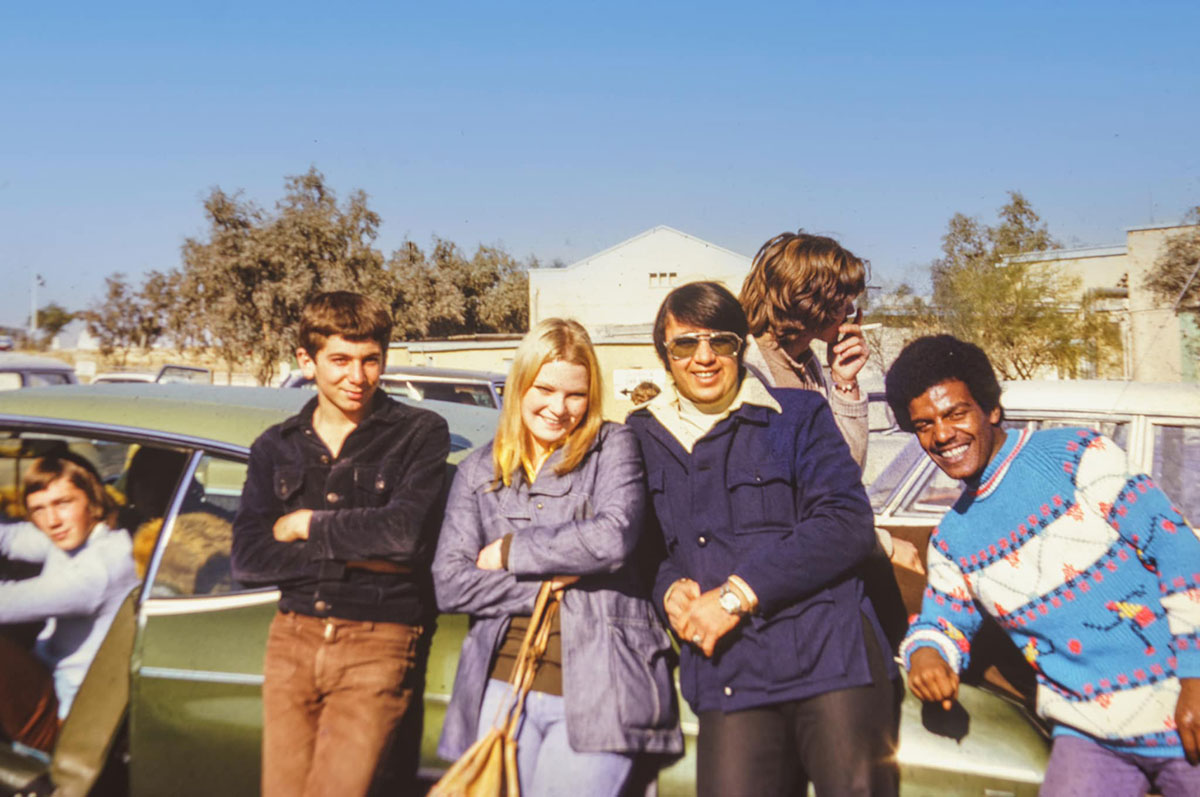
The photos were taken by Ian, his father Arthur, and his younger brother Tom.
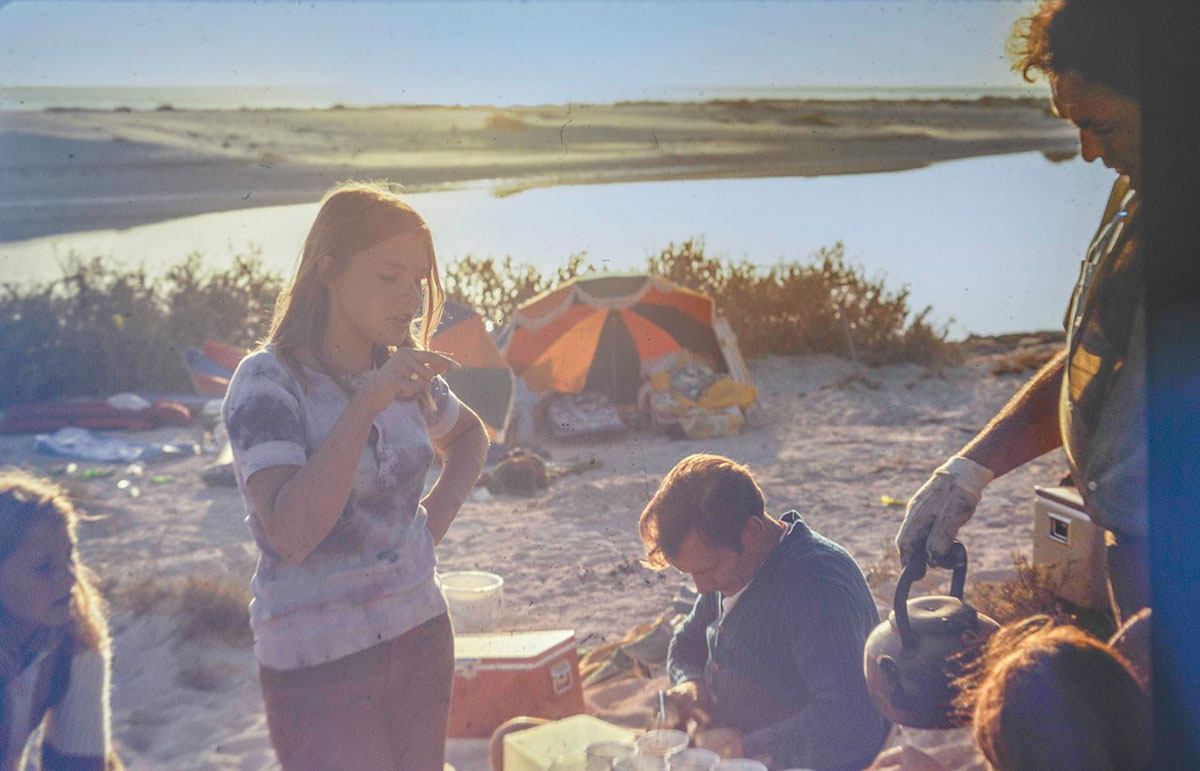
I could only share 20 photos on my Instagram account, but since you guys check the blog you get to see all the photos which amount to 121. To check them out, click here.
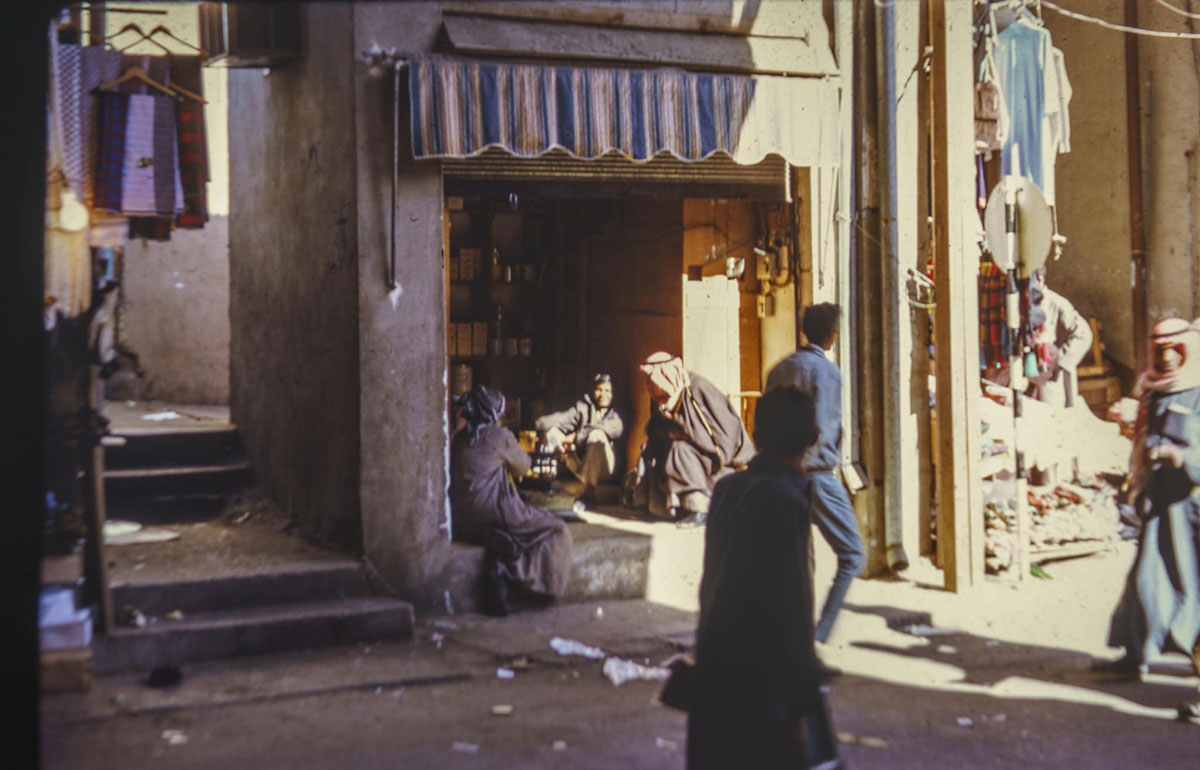
Ian Caldwell was born in Magwa Hospital in Ahmadi in 1955 and lived in Kuwait until 1975. A couple of years ago, he pulled out boxes from his father’s loft filled with about 1,500 old slides, including many from Kuwait. He started scanning the ones related to Kuwait, ending up with about 300 photos that had never been seen before.
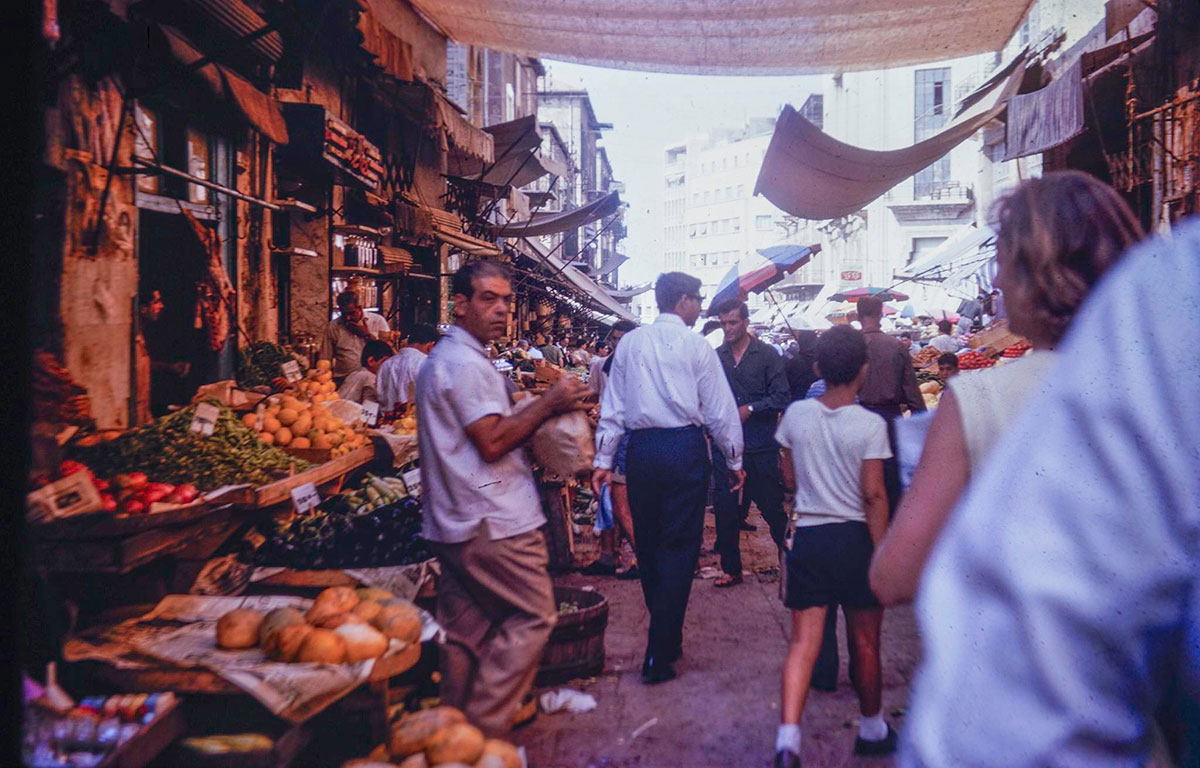
The photos were taken by Ian, his father Arthur, and his younger brother Tom. I’ll be sharing as much as I can from their collection, and I’ve started organizing them into groups based on different topics.
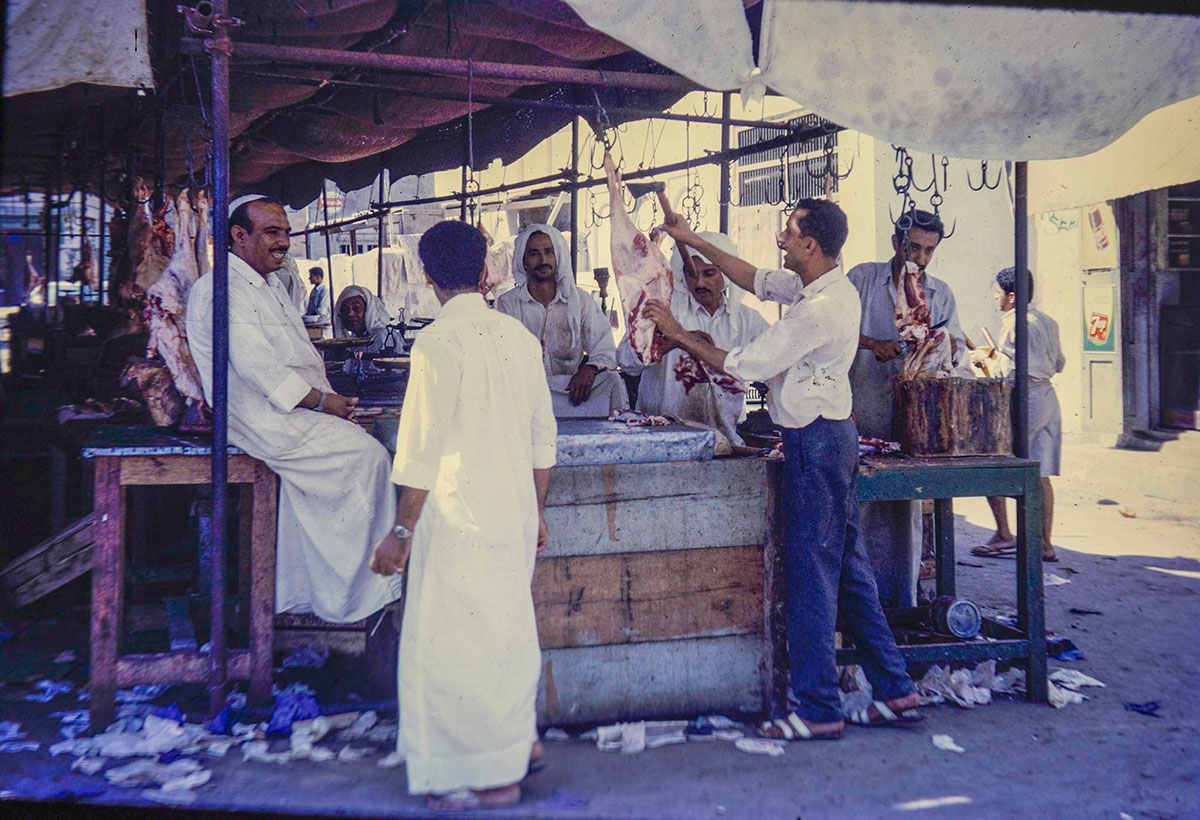
The first ones I’m sharing are photos taken of Souk Mubarakiya and the Souk in Fahaheel sometime in the early 70s.
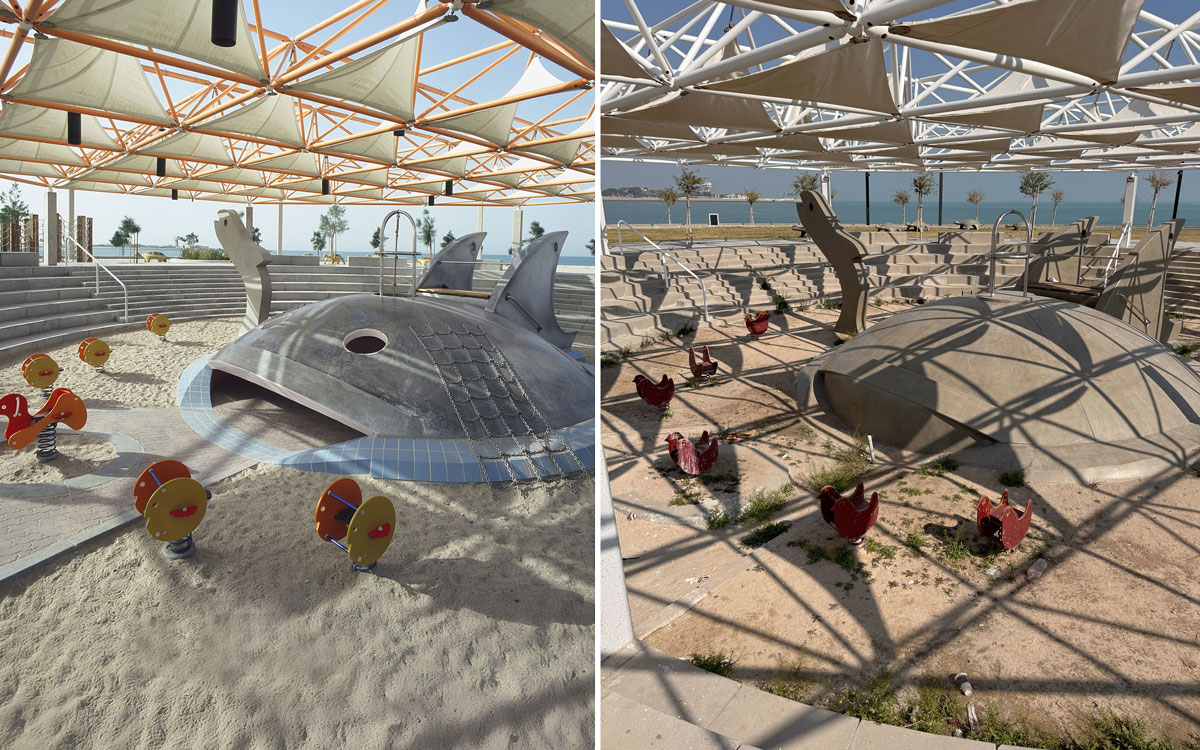
Ghazi Sultan (1941–2007) was a Kuwaiti architect and urban planner. He was regarded as one of the key figures in Kuwait’s modernization and is best known for the Gulf Road waterfront project, including Green Island. The project also included a number of smaller artificial islands along the coast with my favorite being Turtle Island (Google Maps).
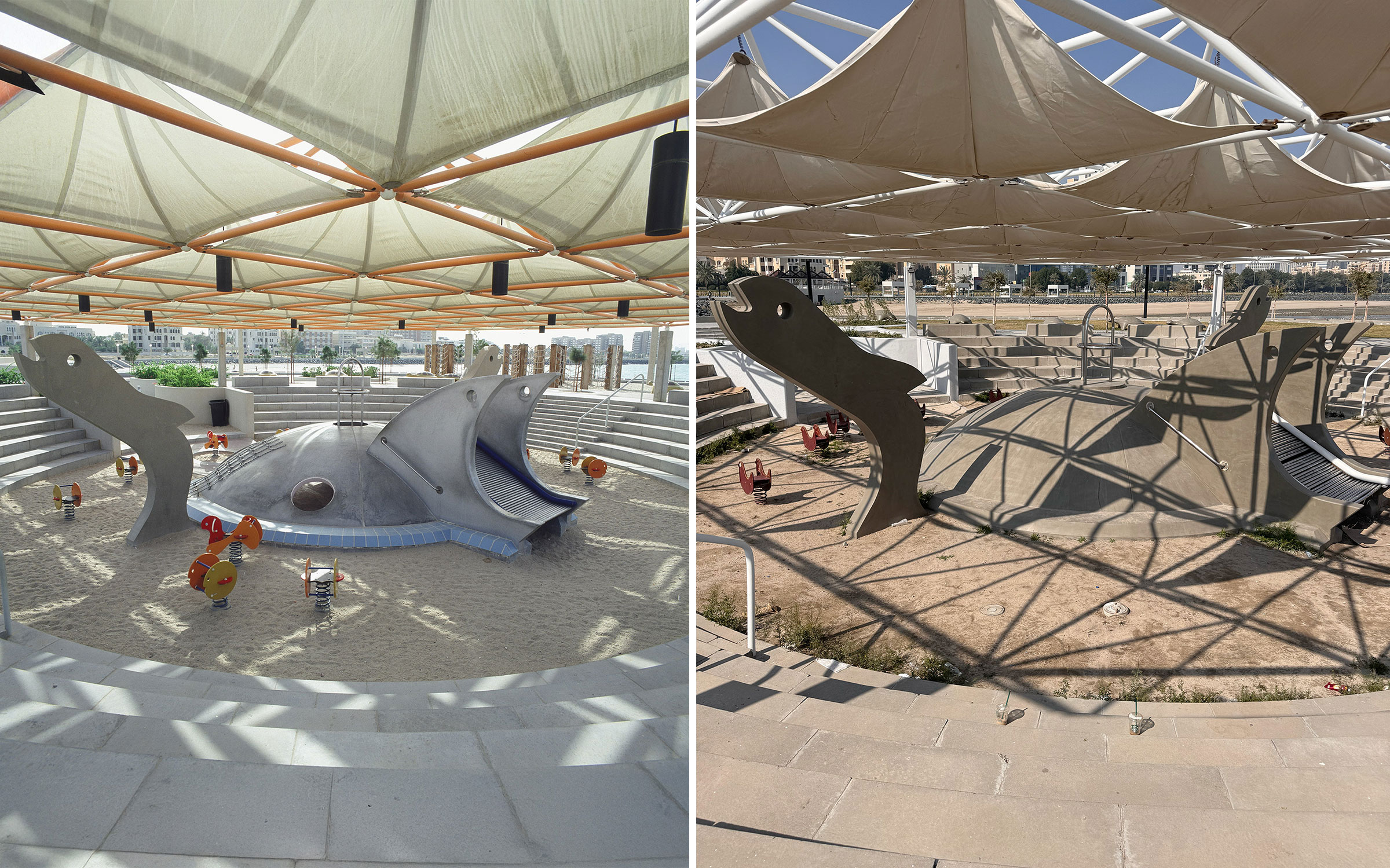
Turtle Island is a small artificial island located behind the Italian restaurant Johnny Carino’s. It has a children’s play area featuring a giant fish structure in the middle, while the rest of the island is filled with large turtle sculptures.
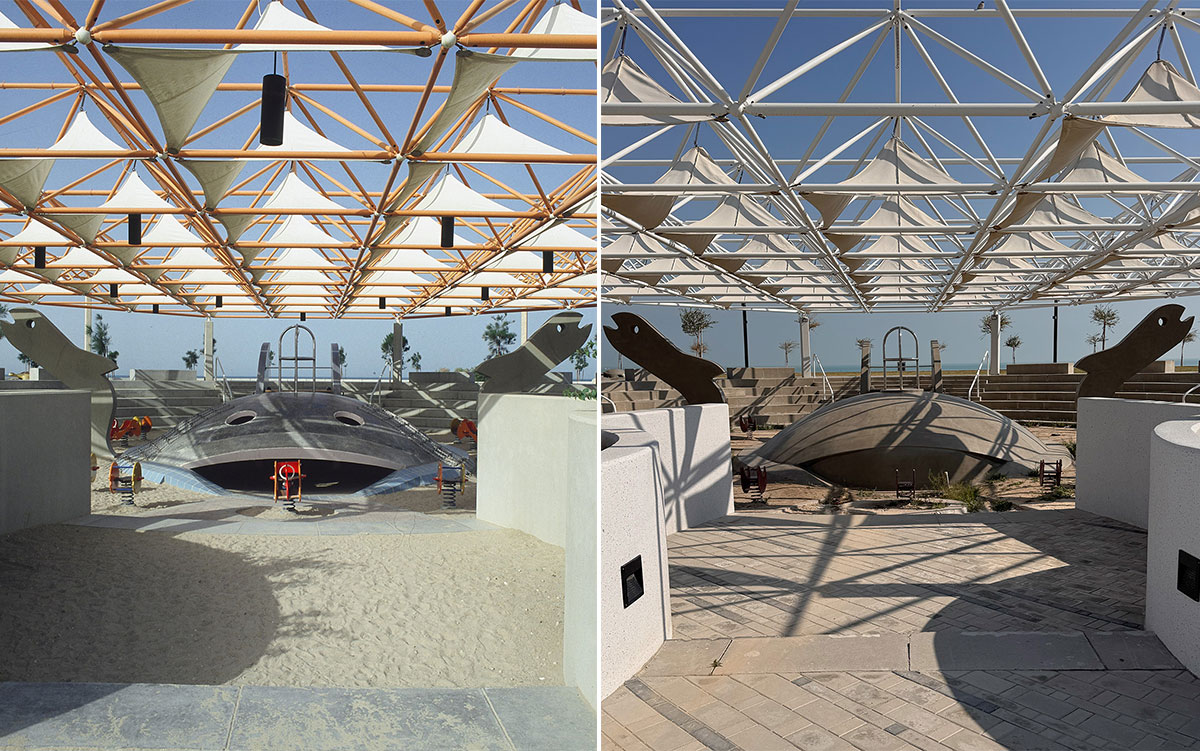
Part of the Ghazi Sultan photography archive includes photos he took when the project was completed. Although the photos aren’t dated, I’d assume they were taken in the late 80s. The island looked so different back then compared to today!
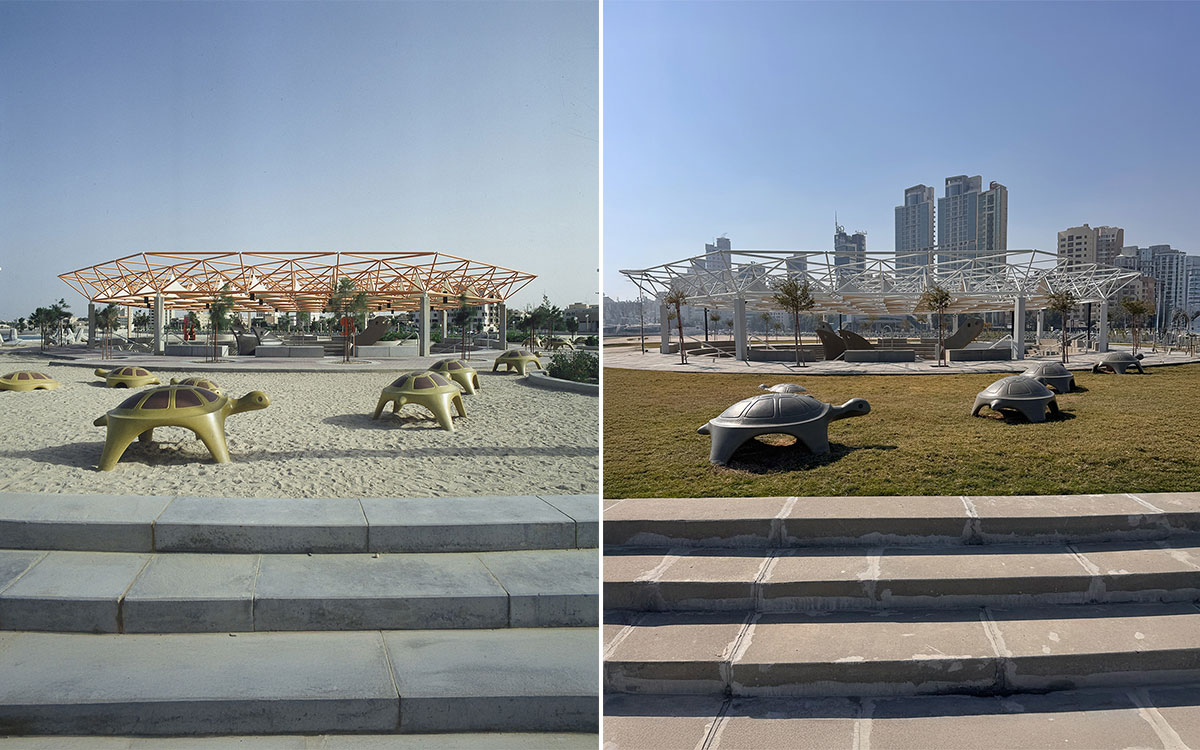
First off, what happened to all the colors? The island used to be so much more vibrant — a bright orange frame structure, colorful toys, and the giant fish even had a crawl space for kids. Even the turtles that surround the island were painted olive green with brown accents. Today, the island feels monotone. The orange frame is now white, the fish lost its crawl space and just looks like a grey blob, and the colorful toys were swapped out for dark red ones that are now in bad shape. As for the turtles, they’re now just dull grey concrete color.
To find out more about Ghazi Sultan, visit ghazisultan.com or @ghazihamadsultan